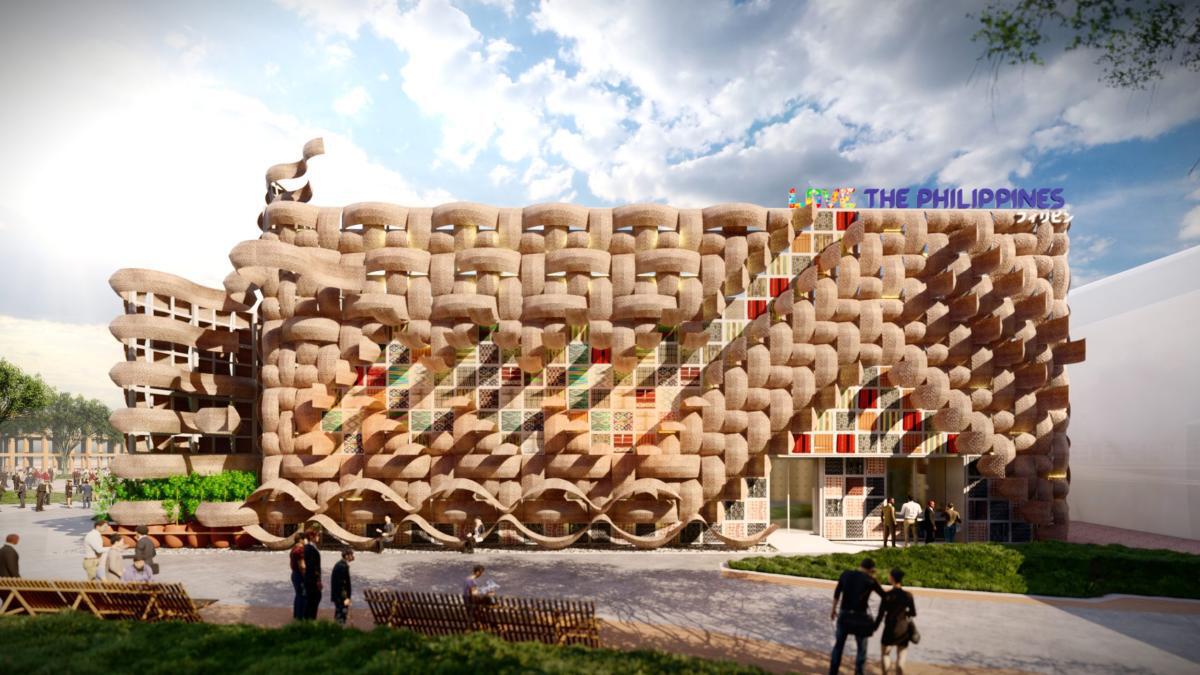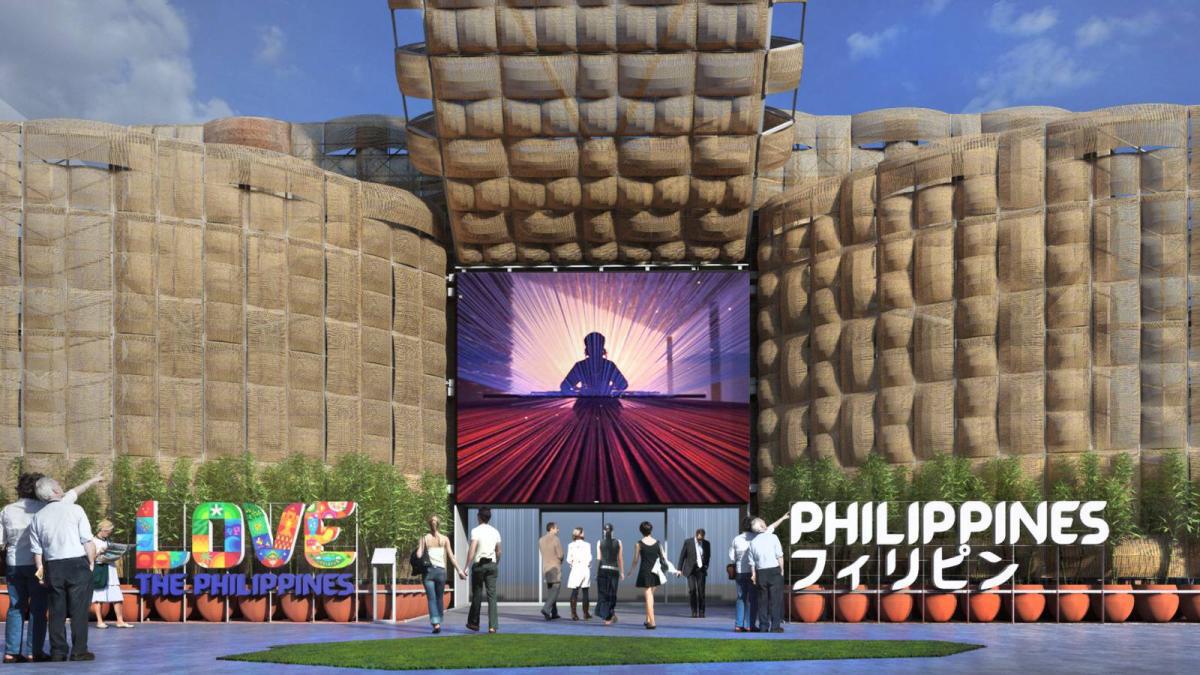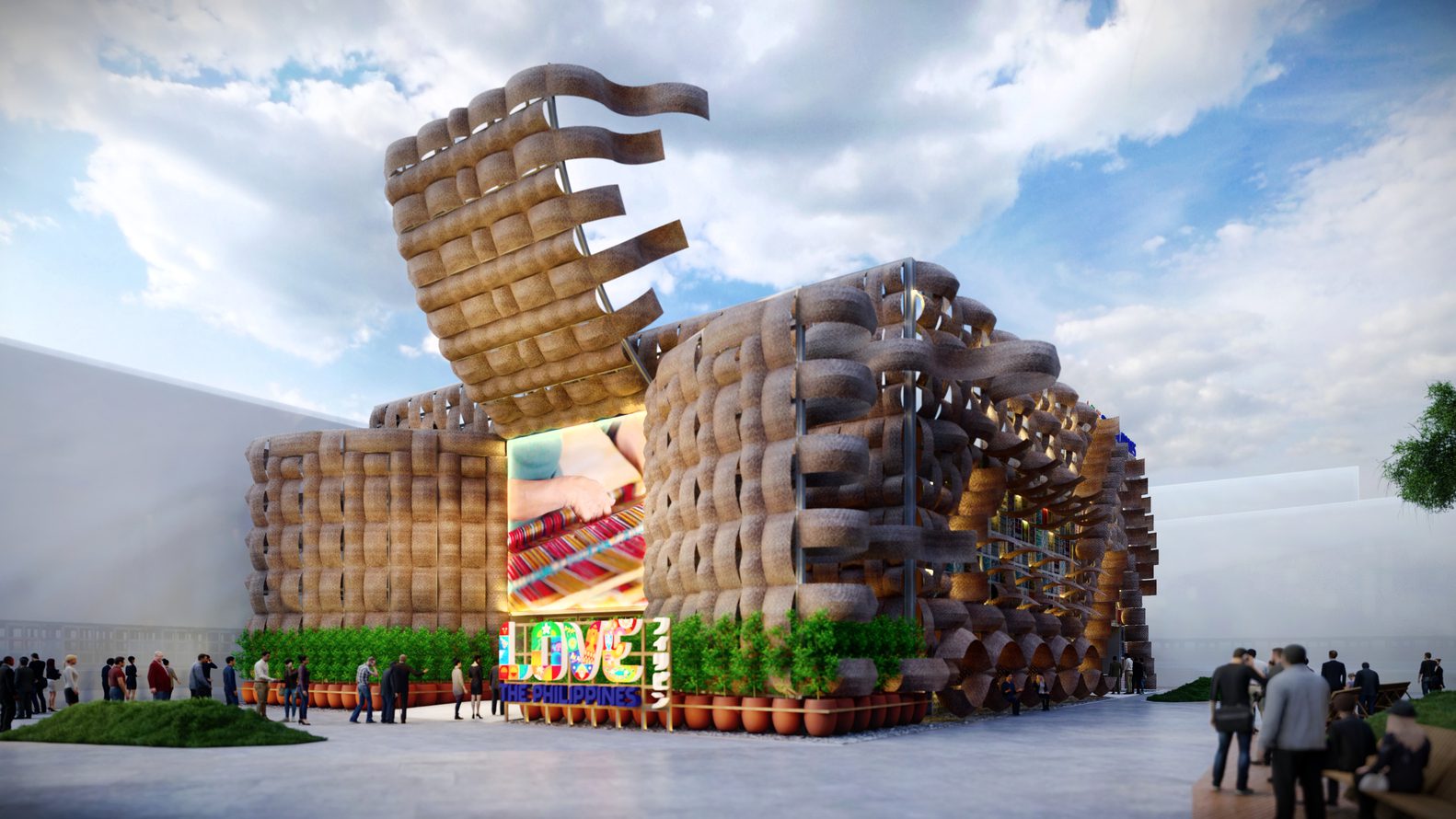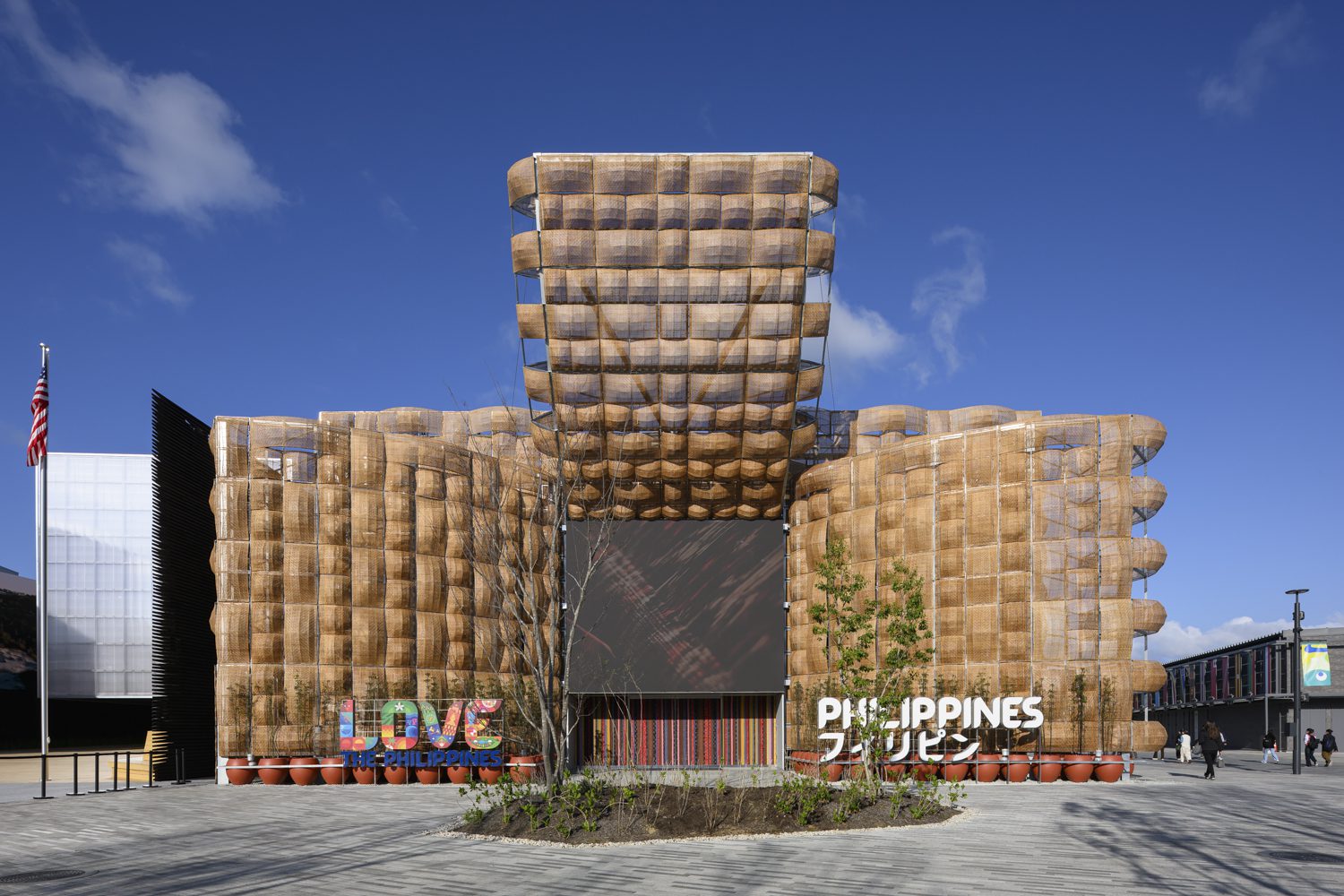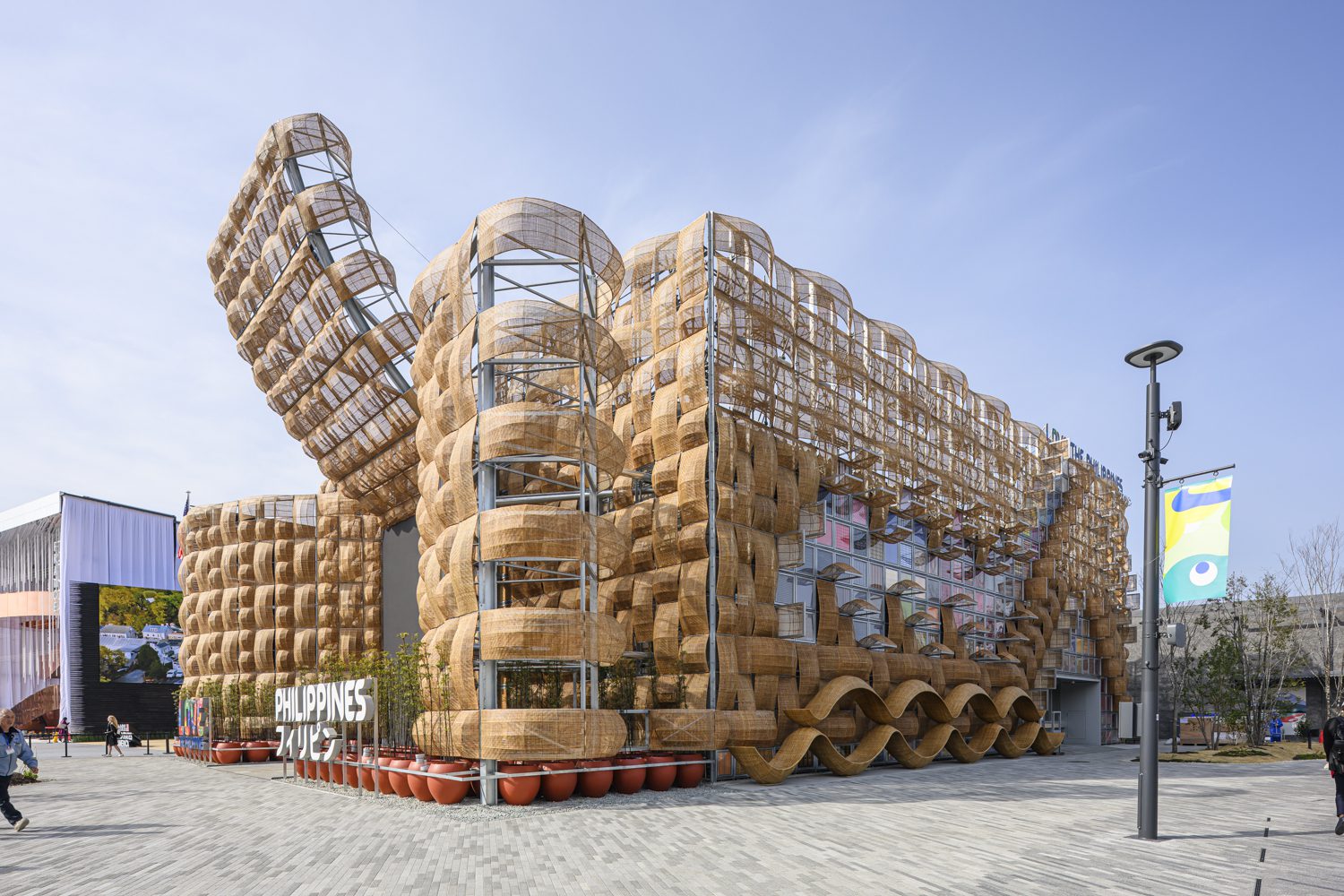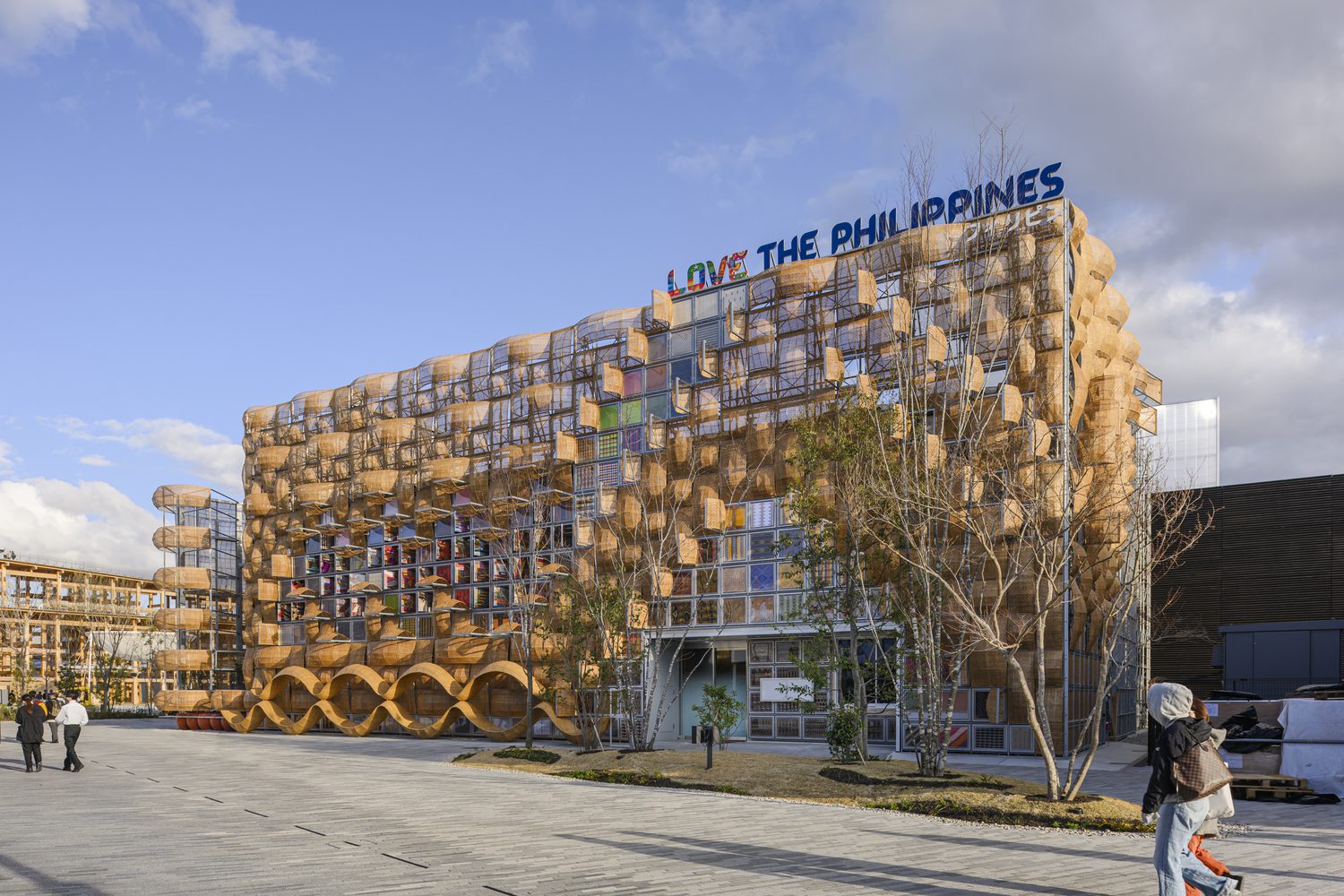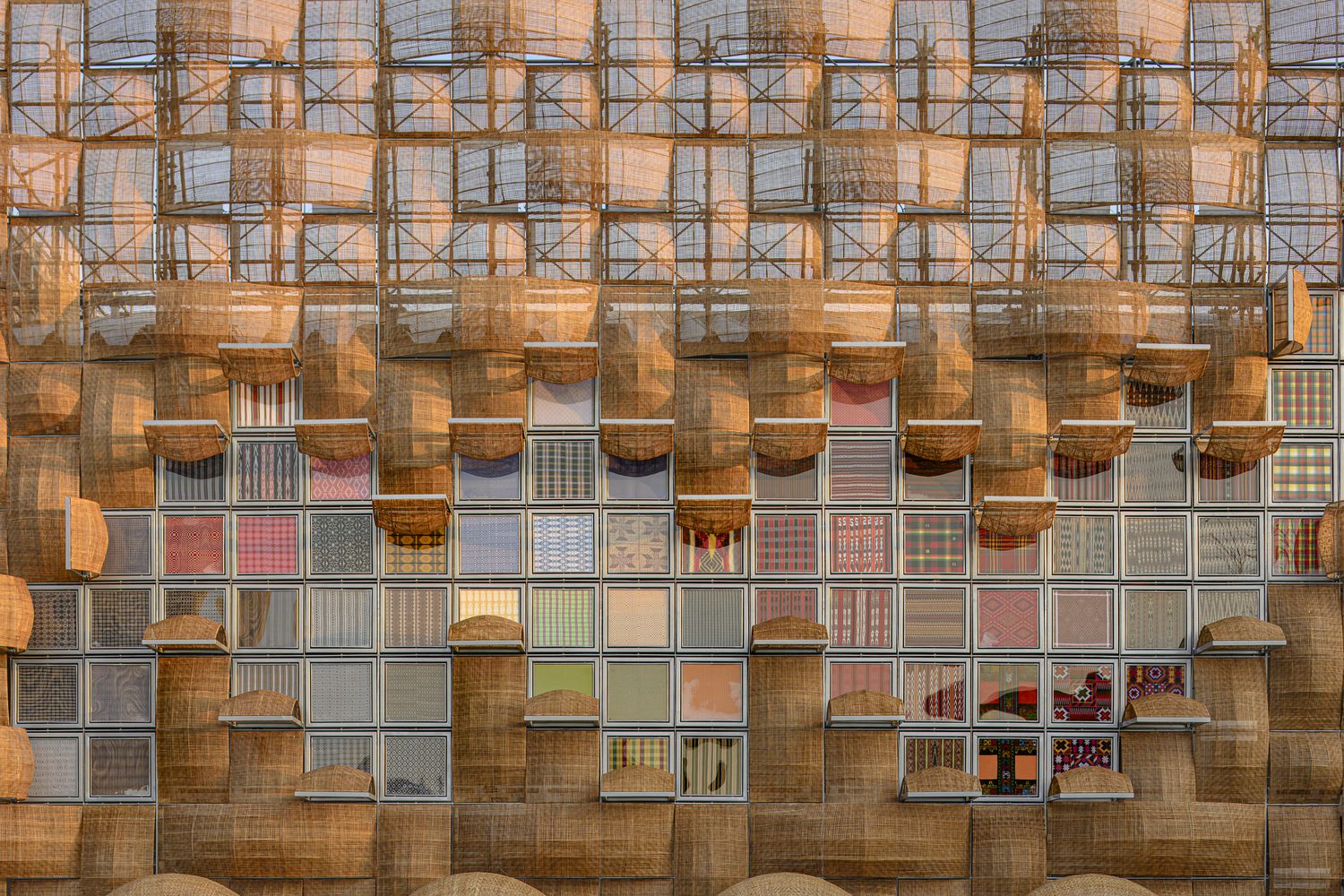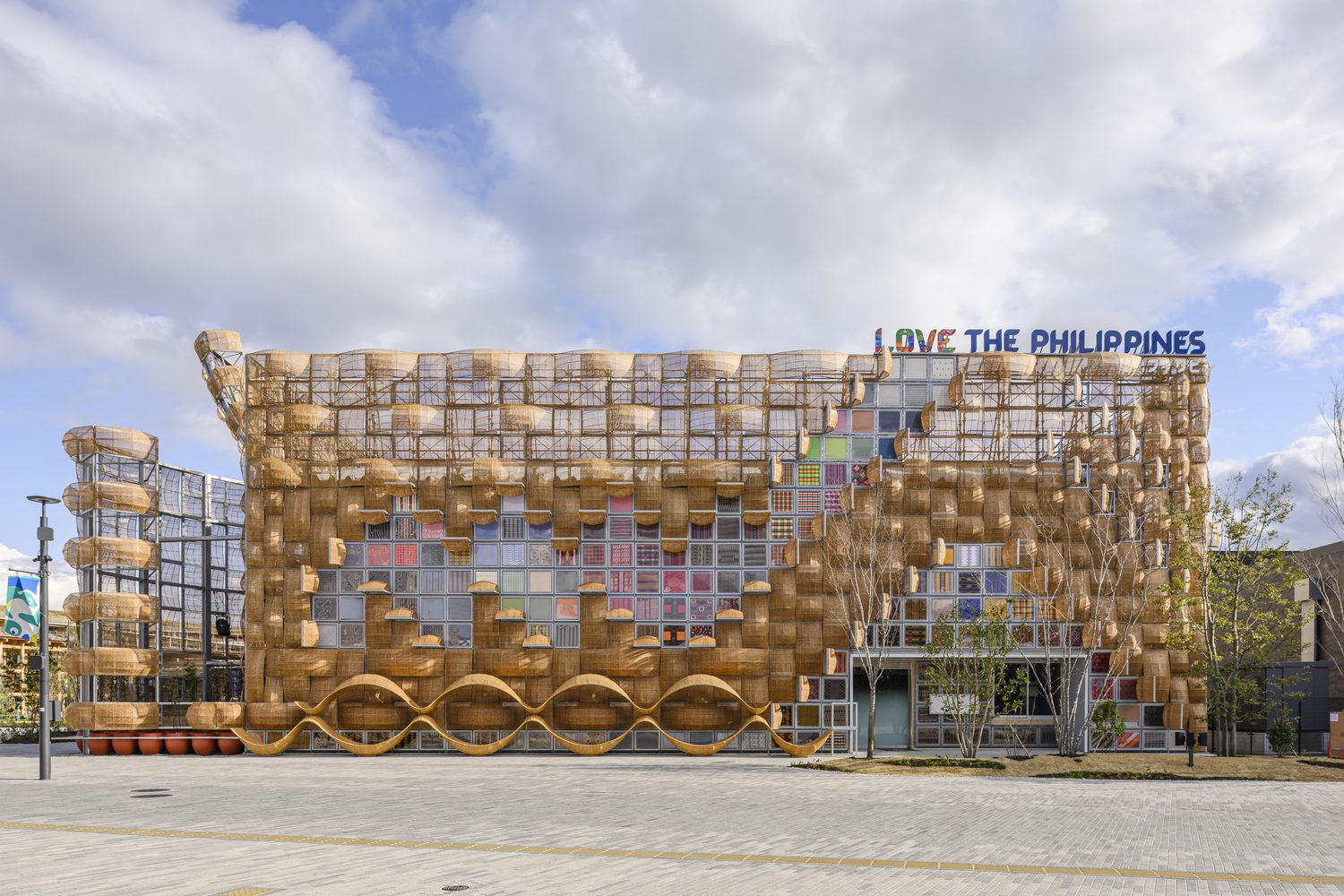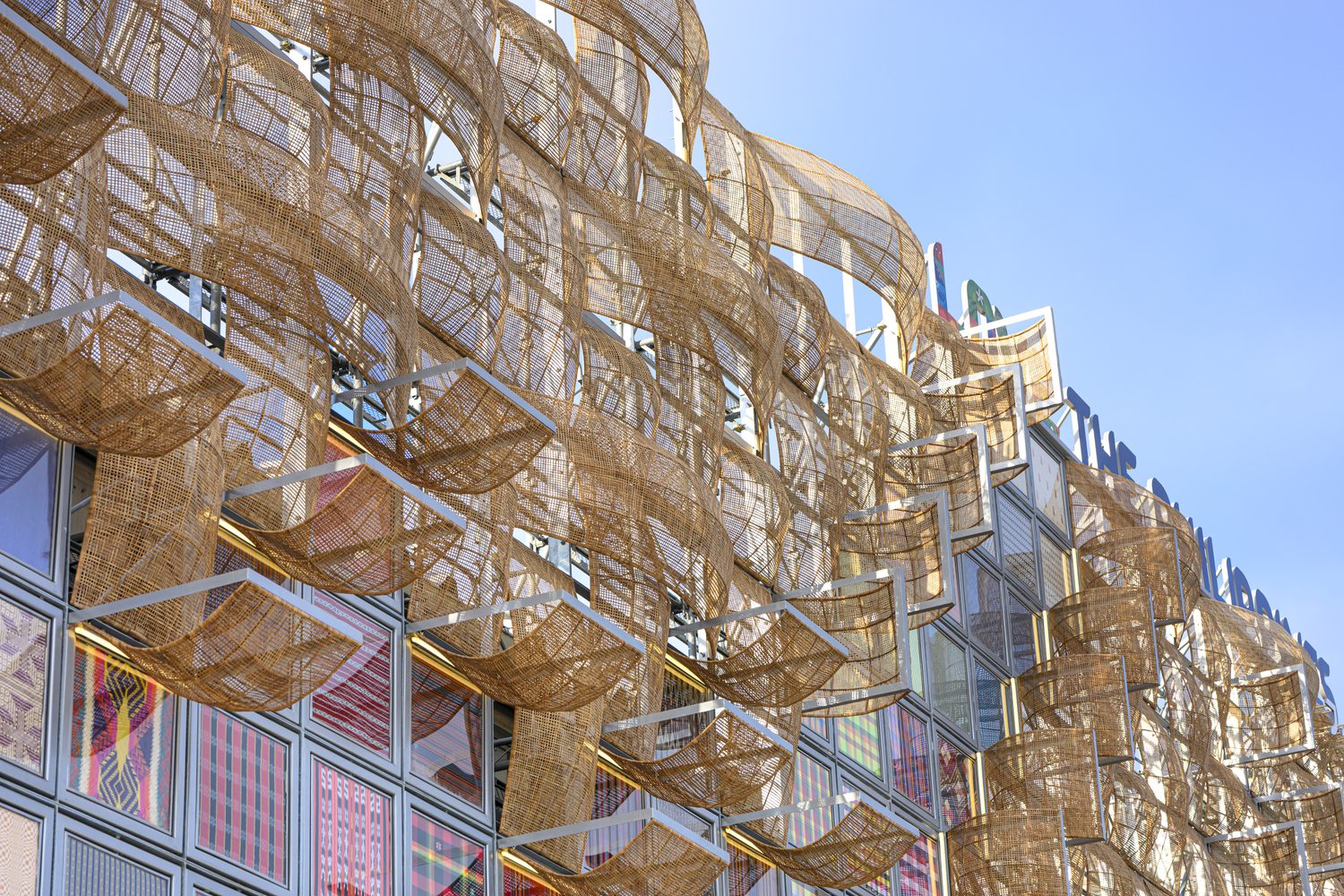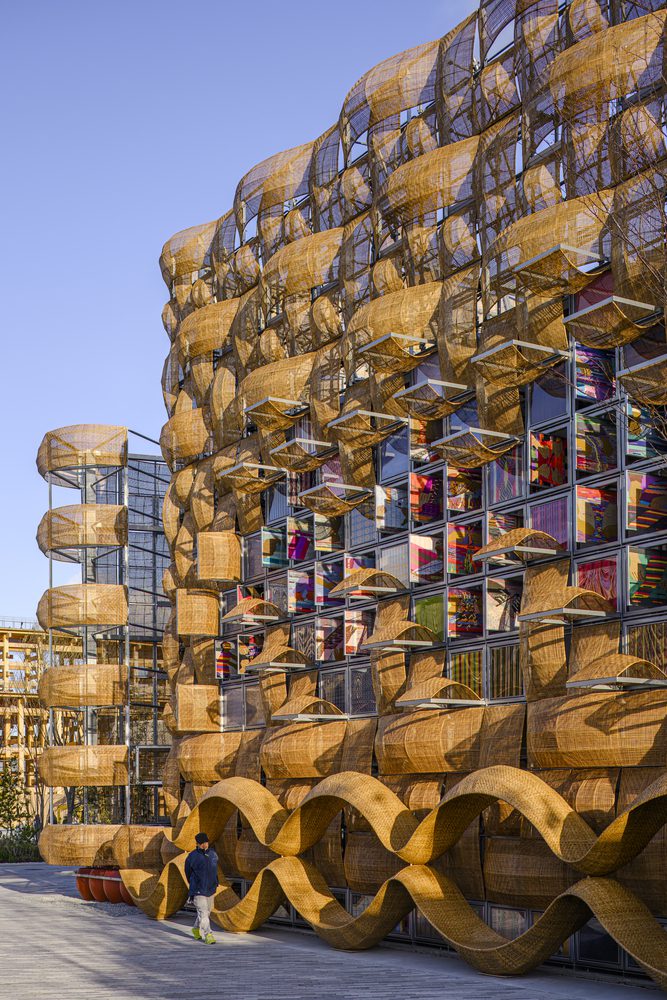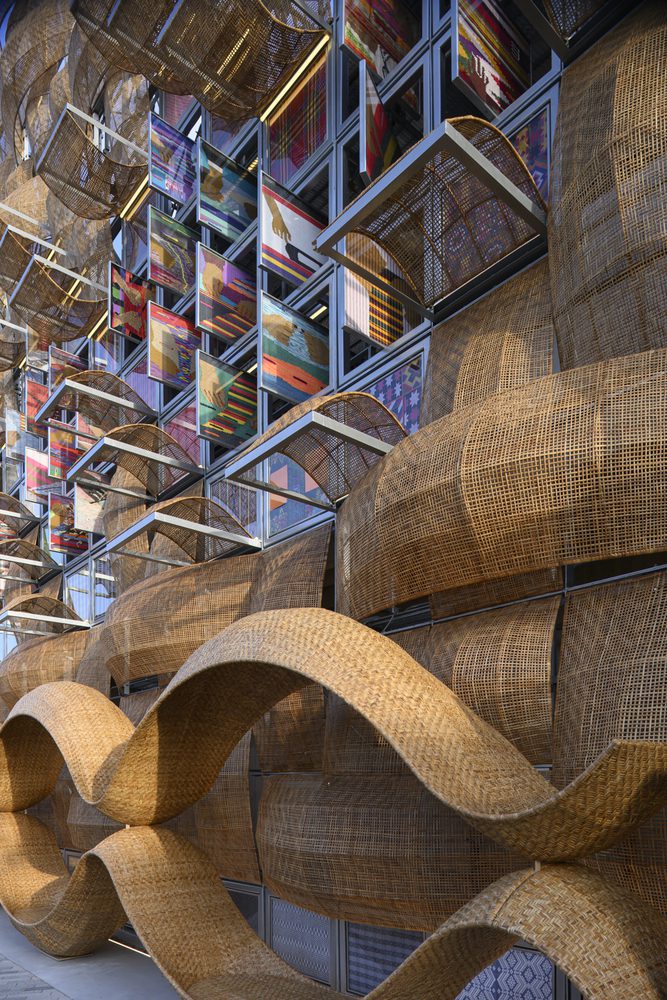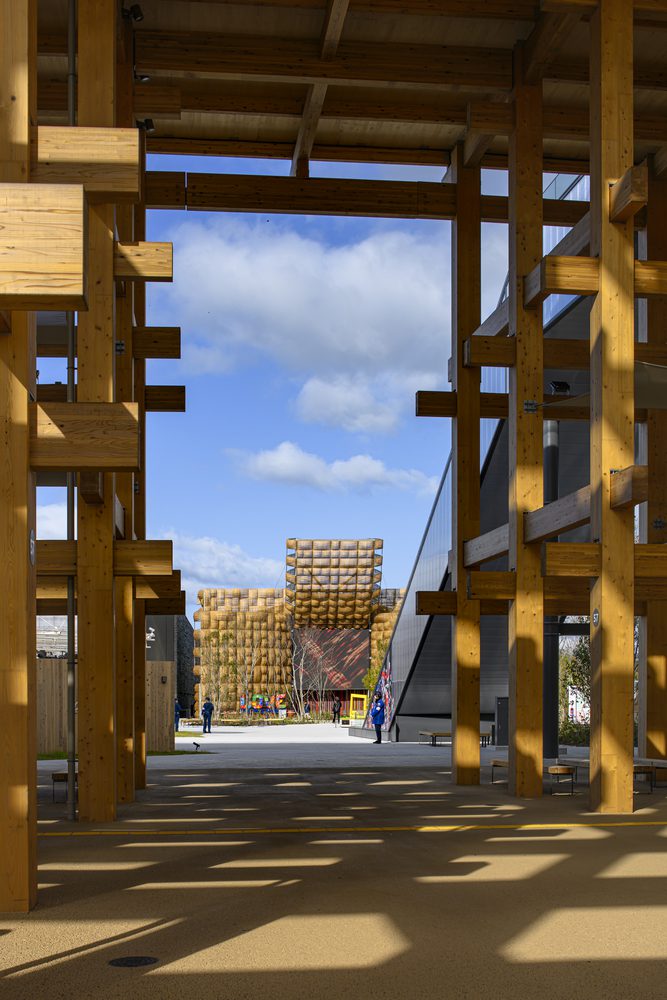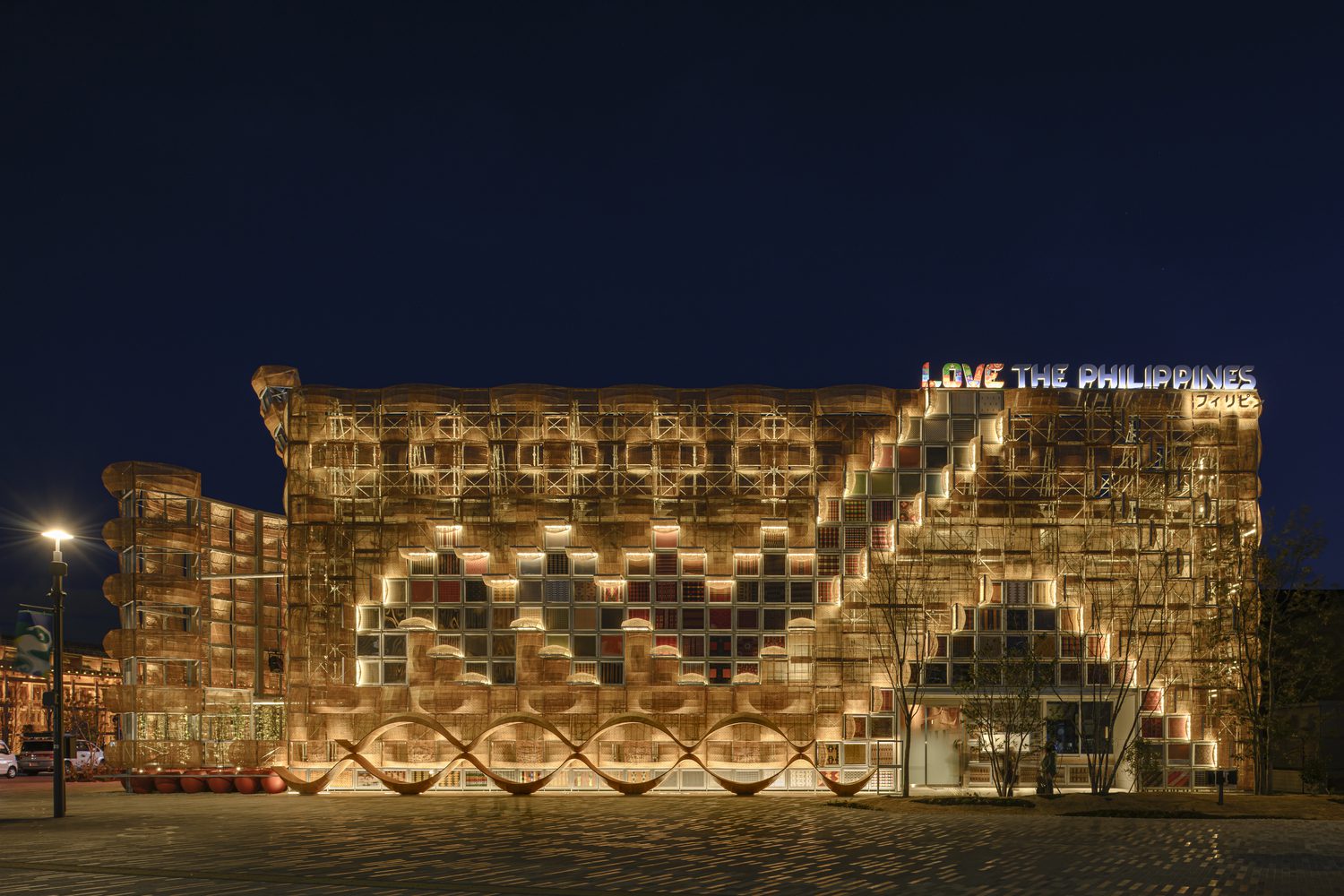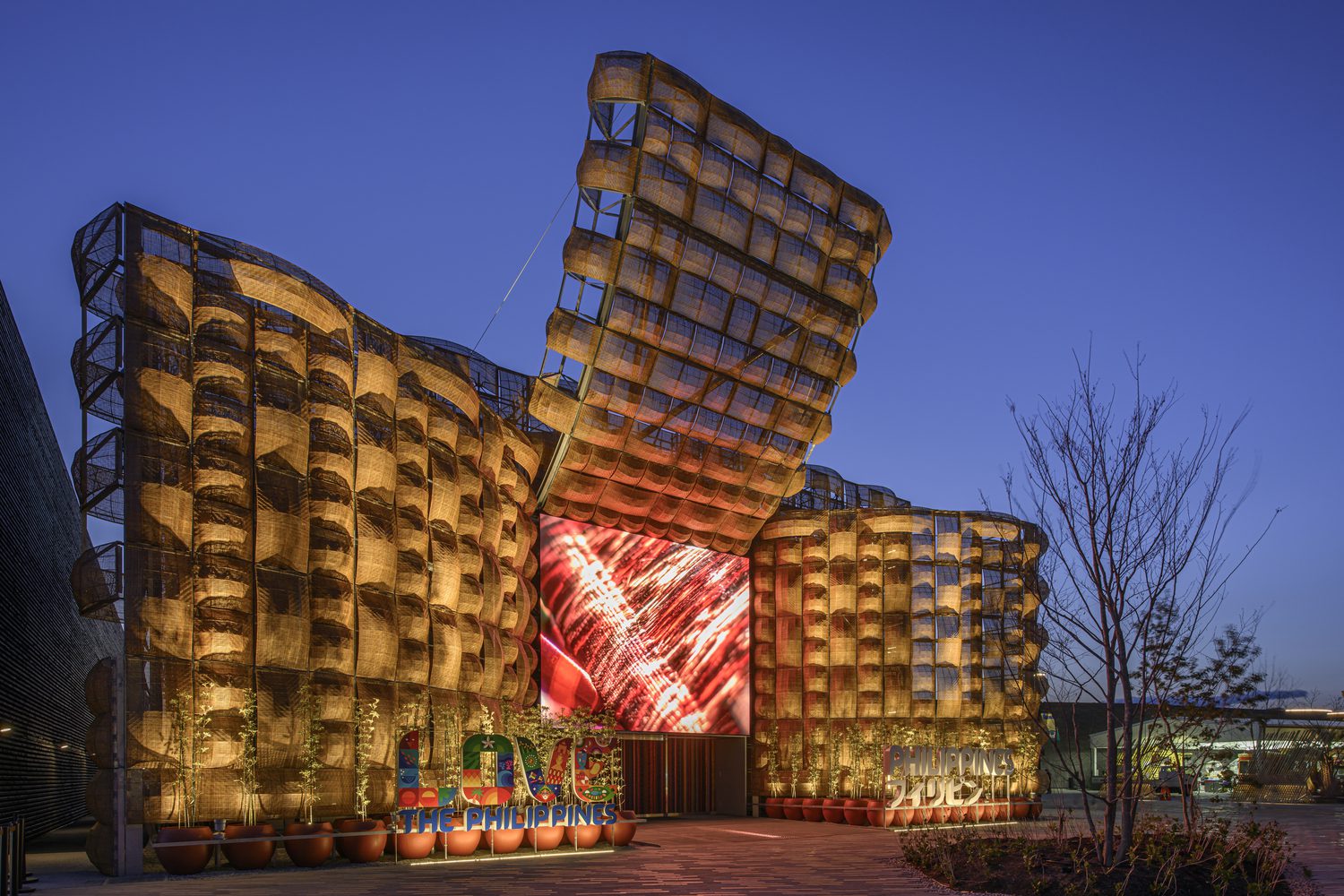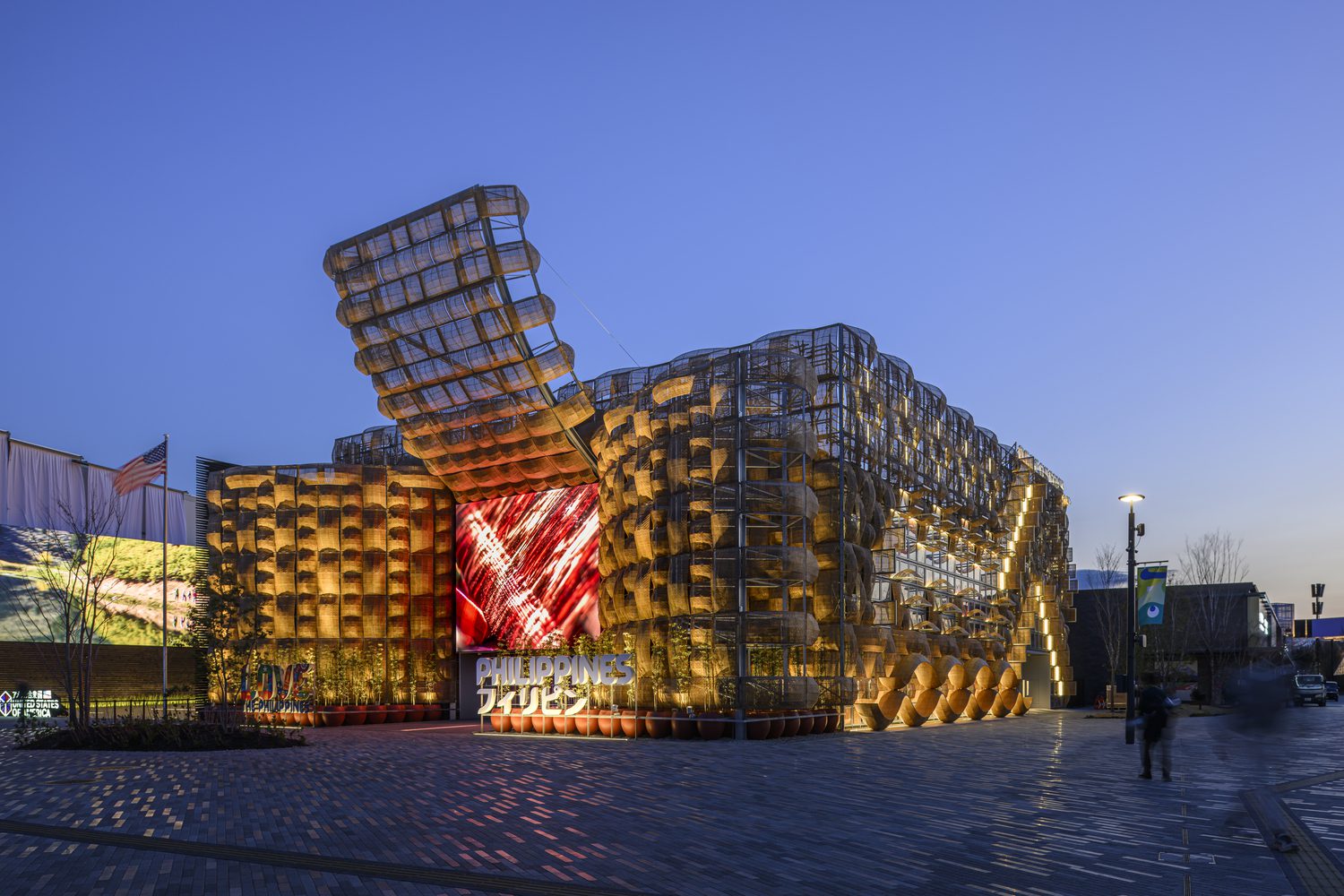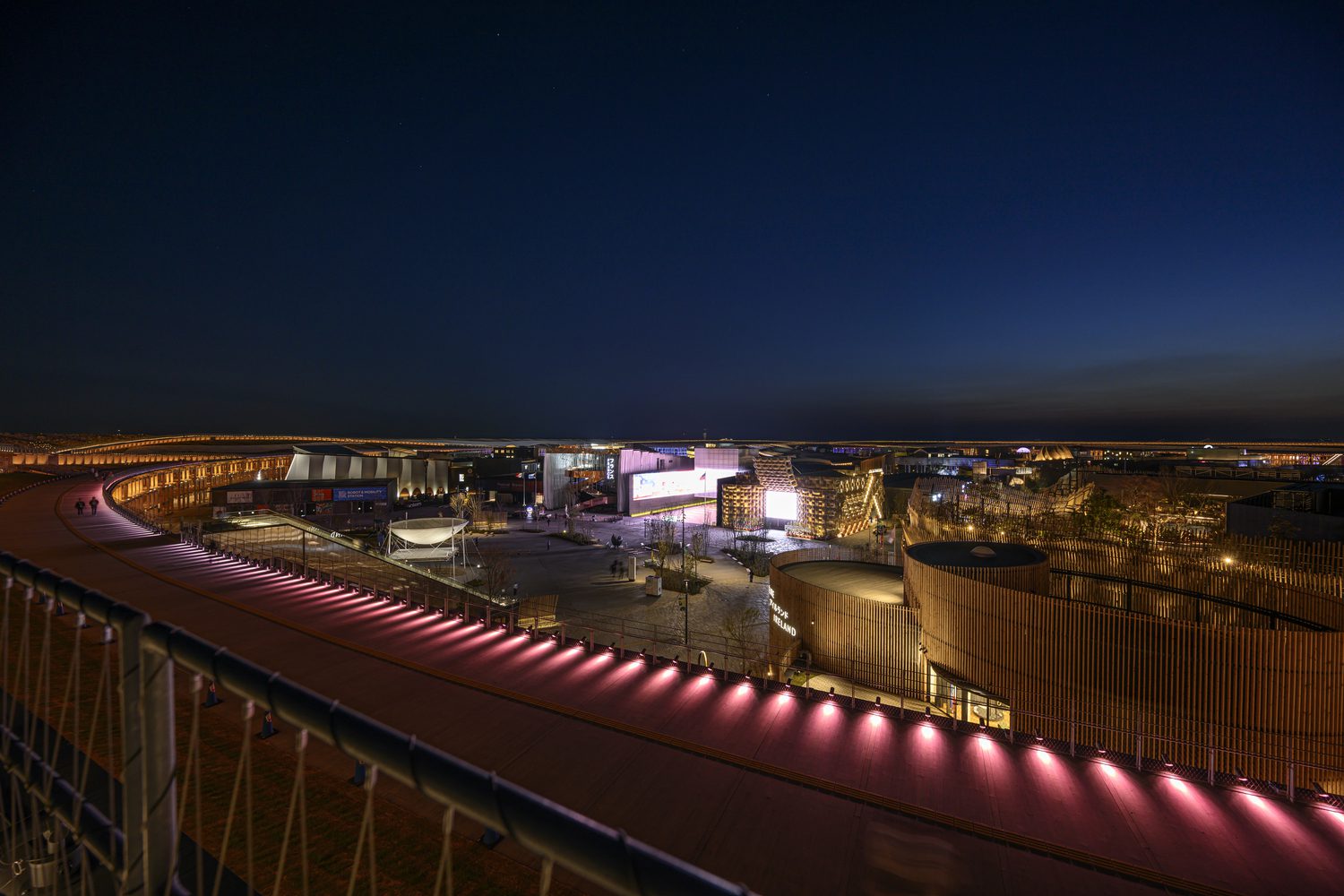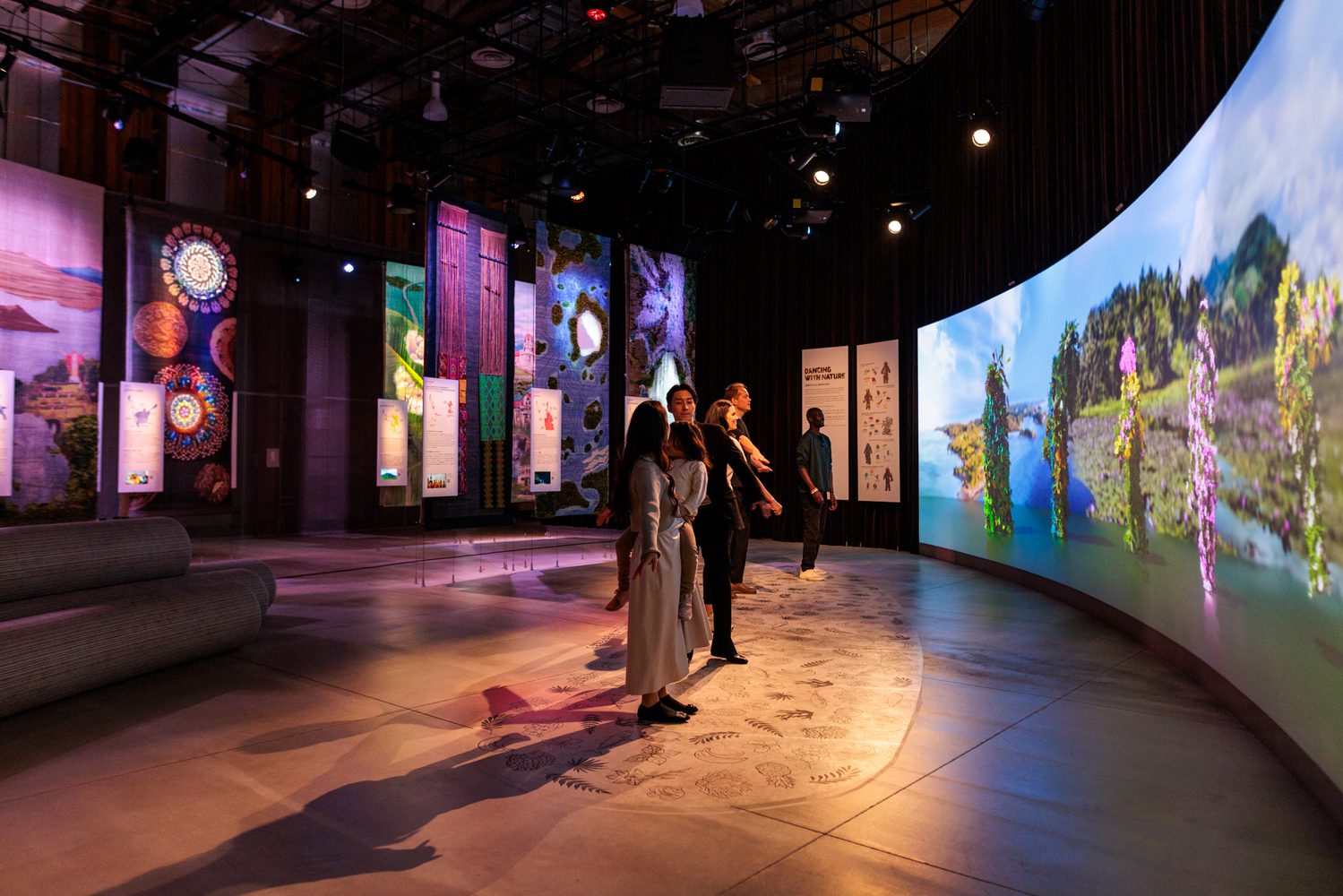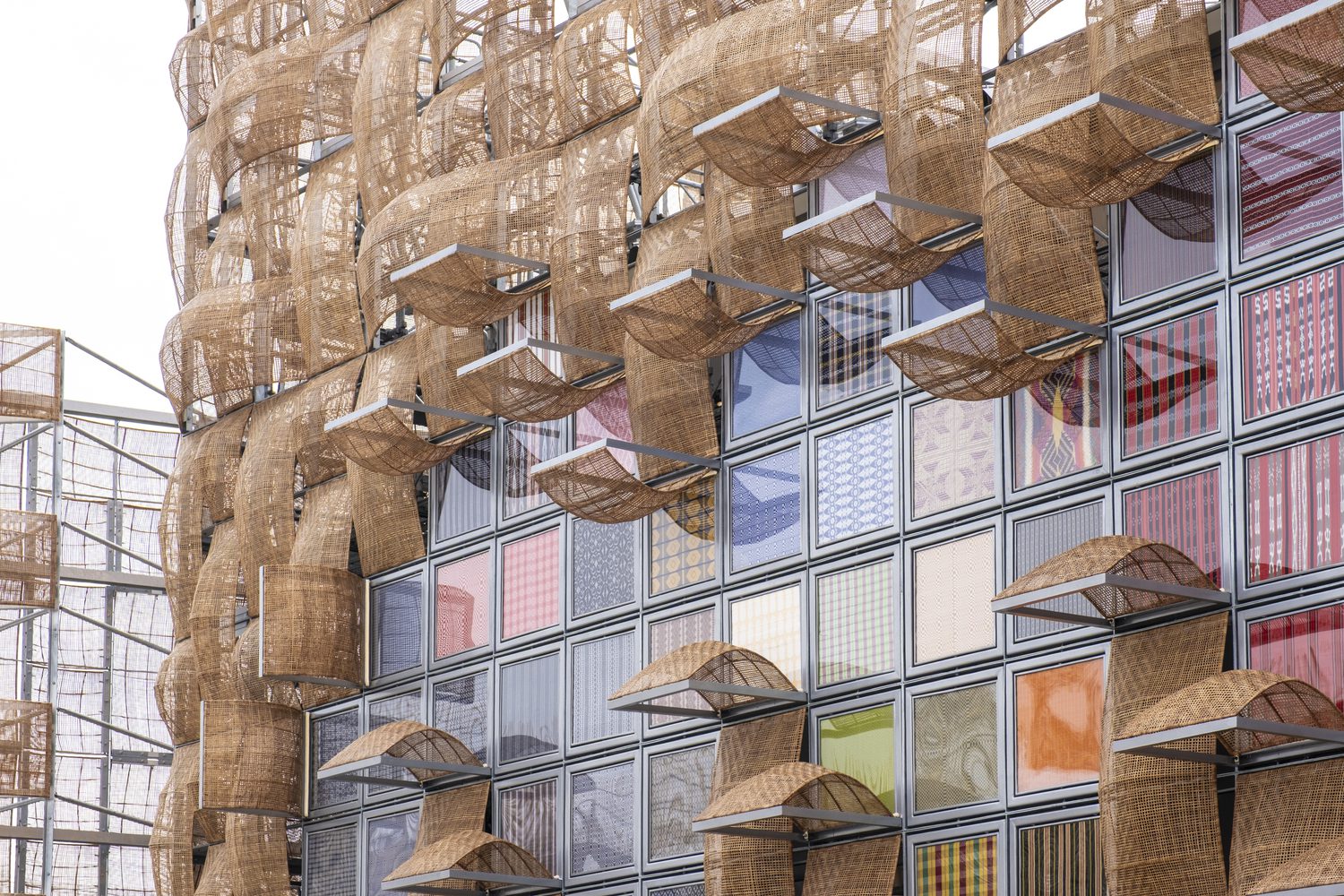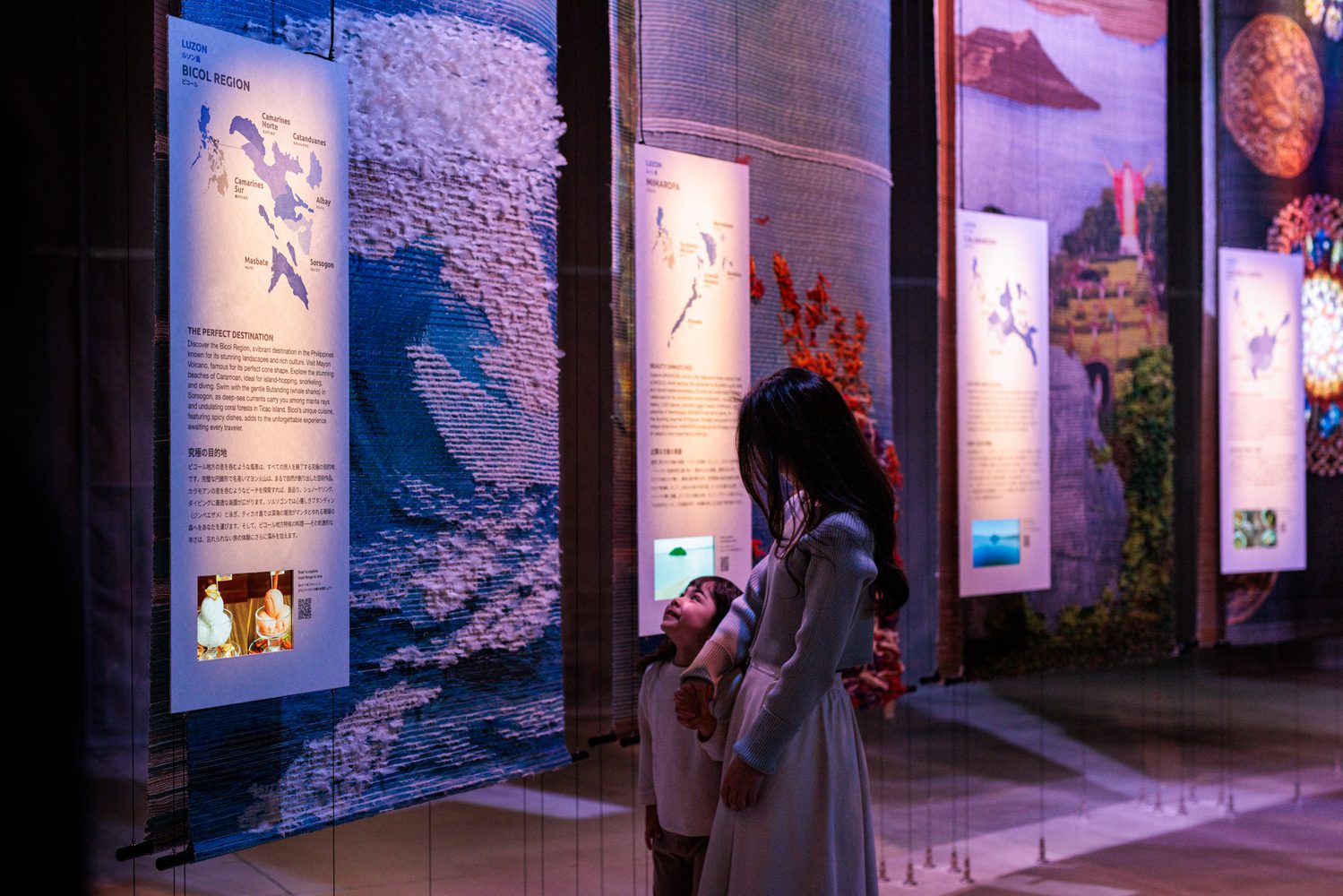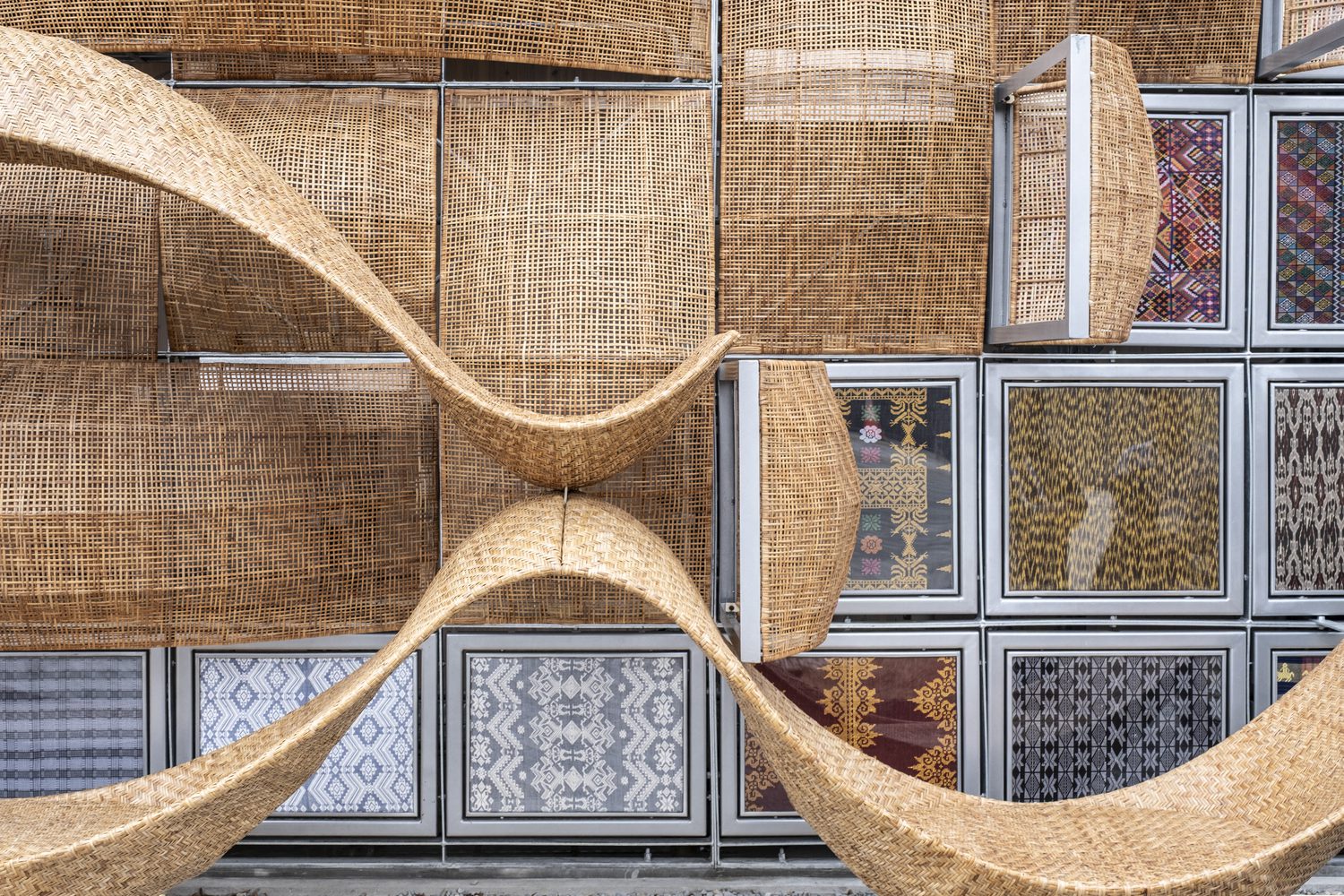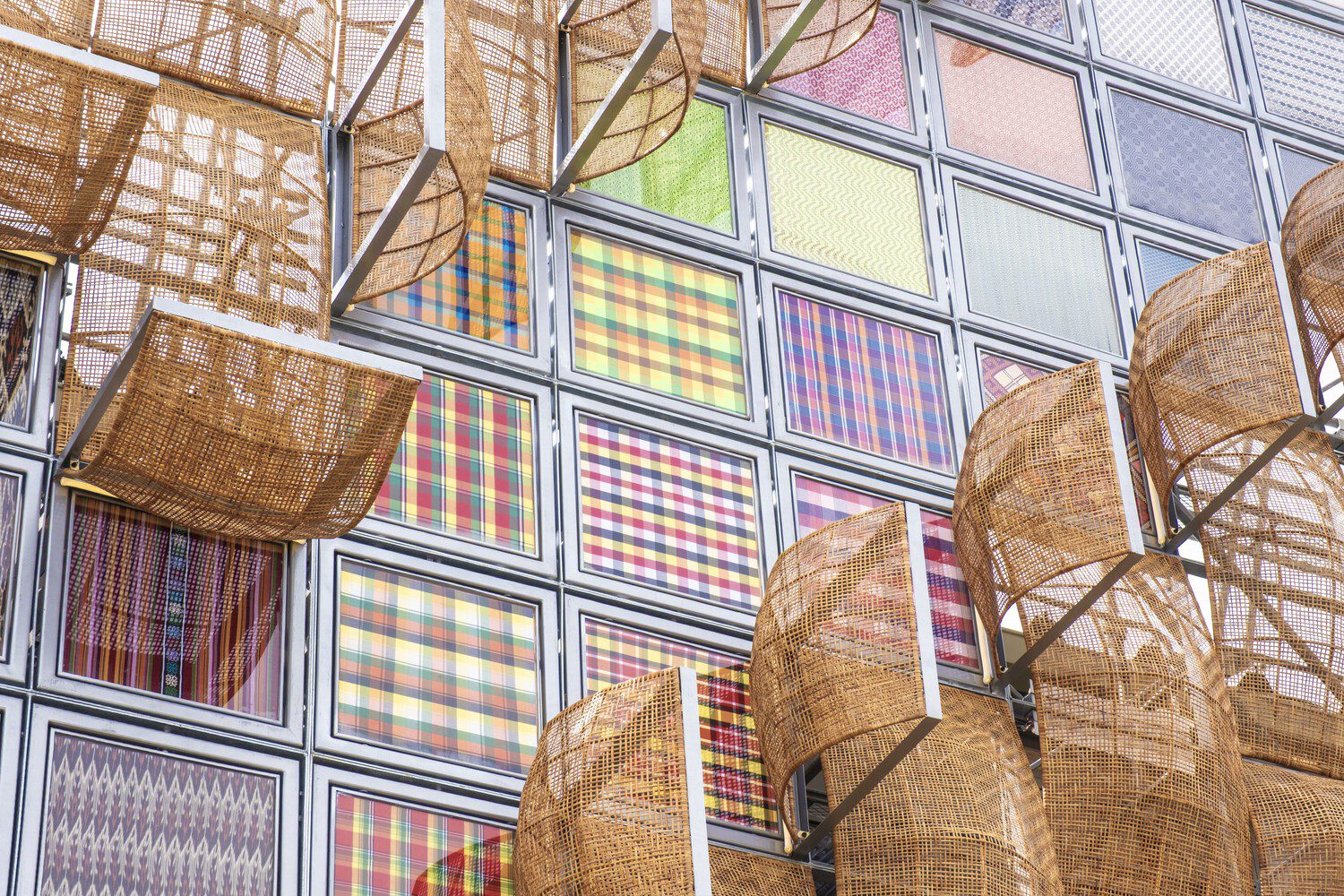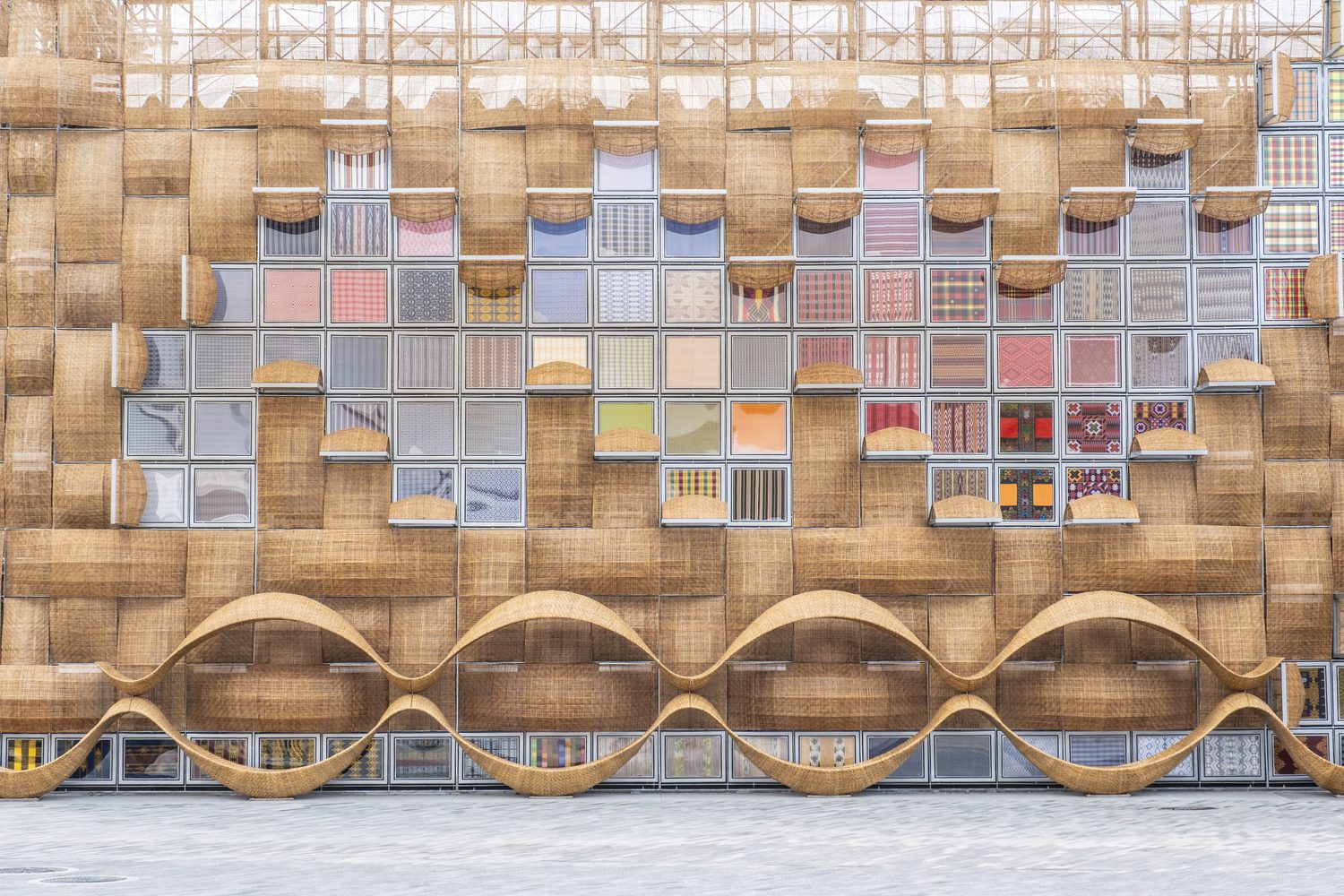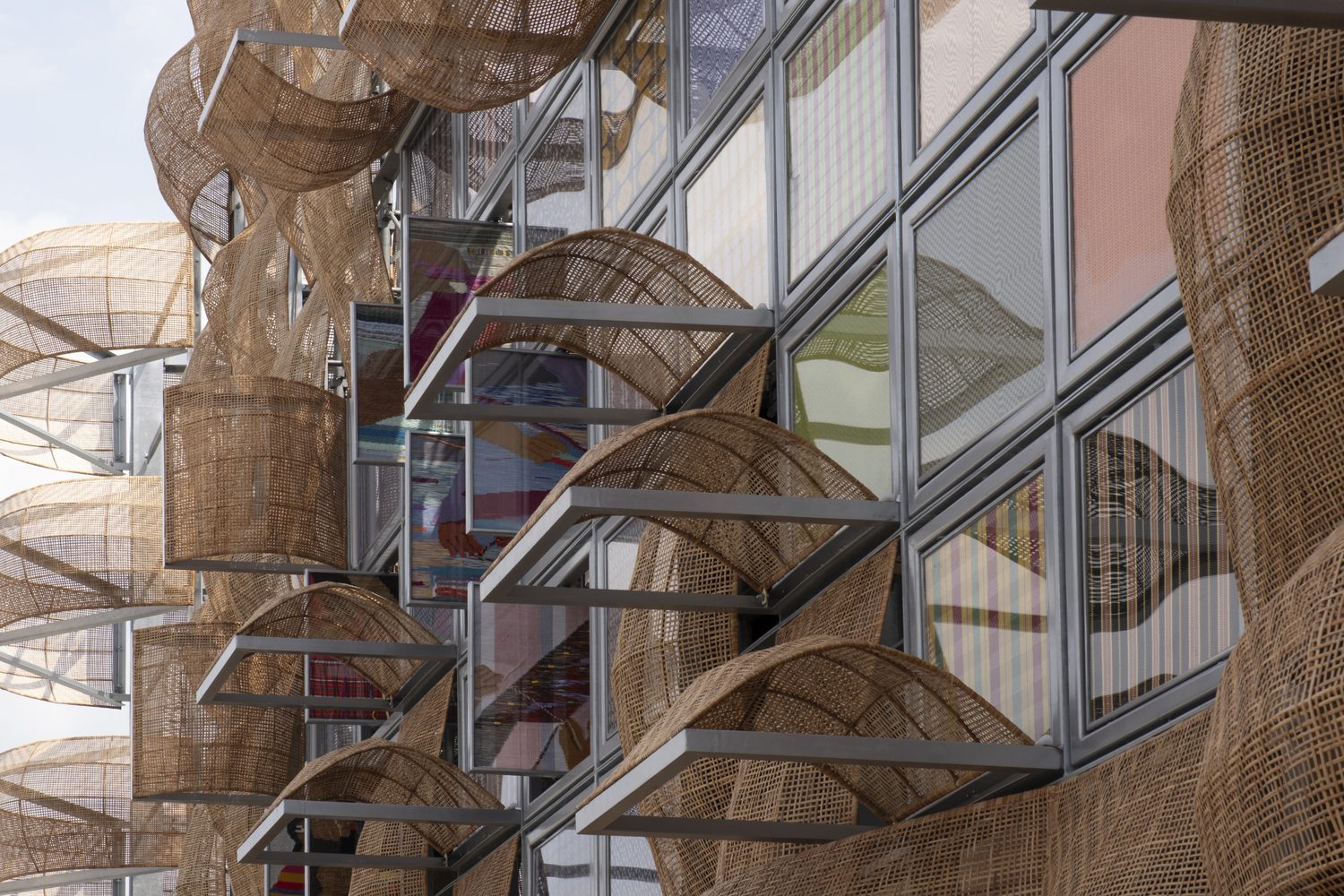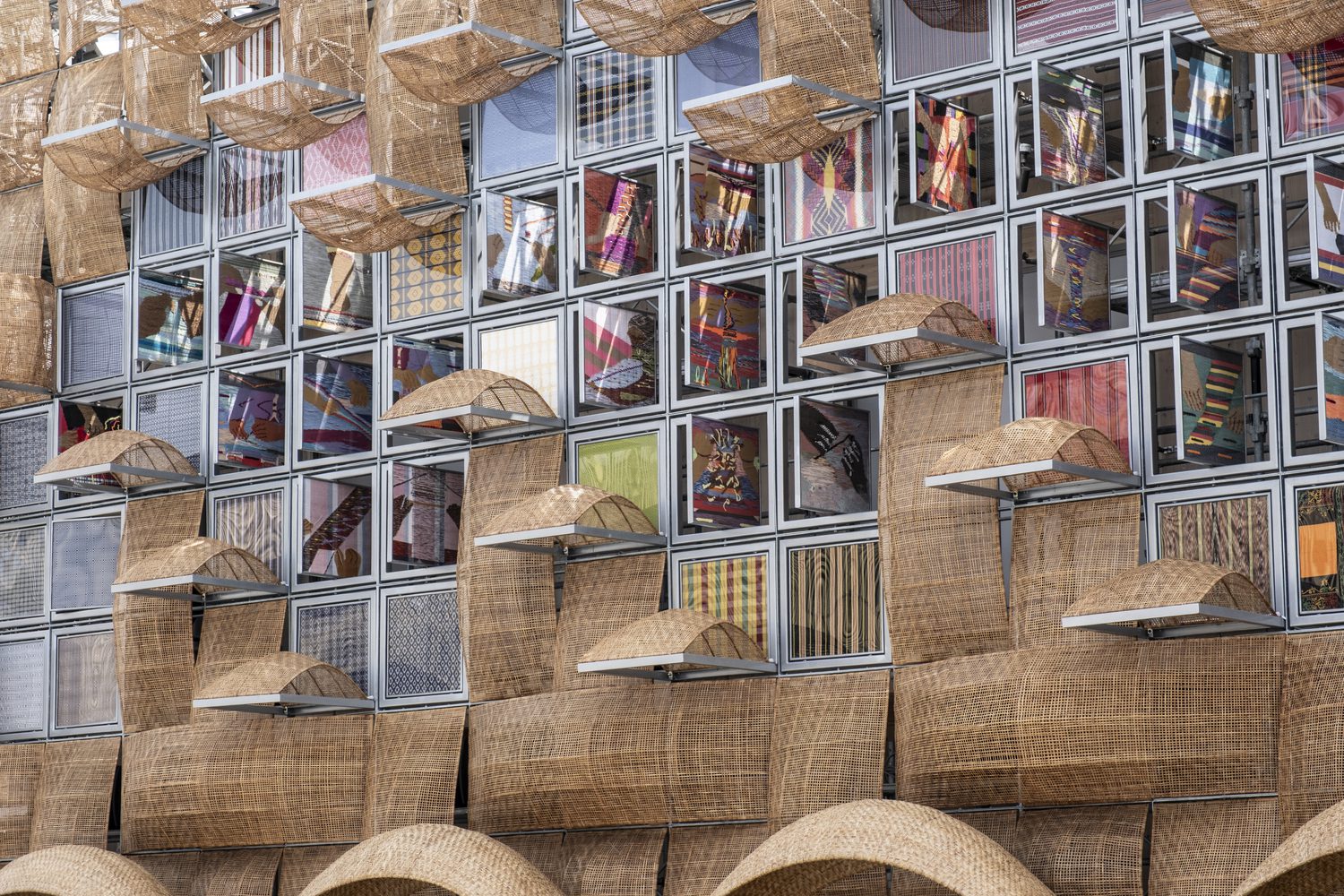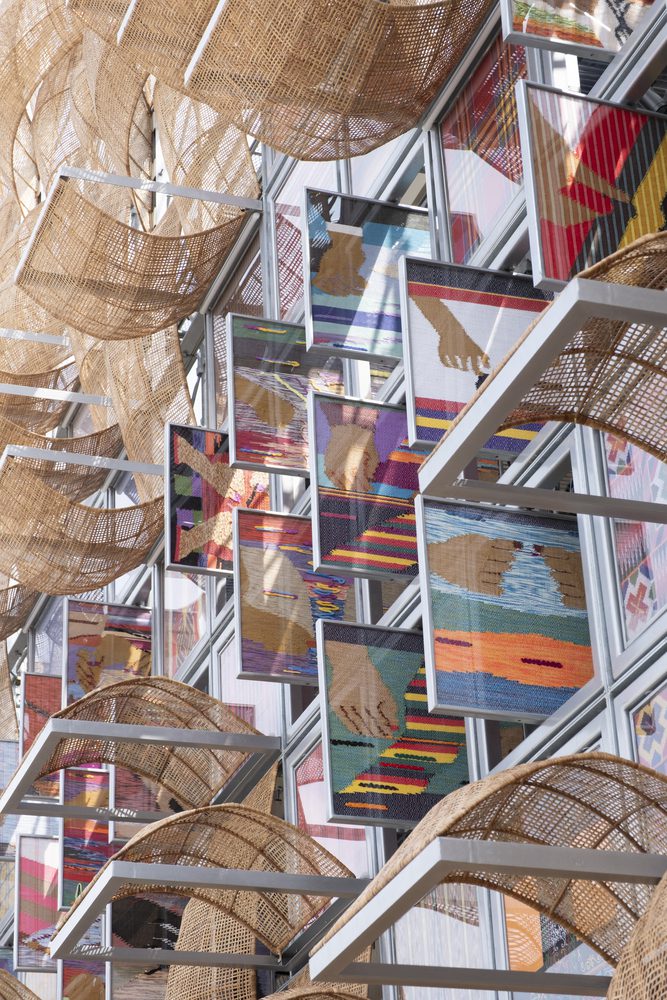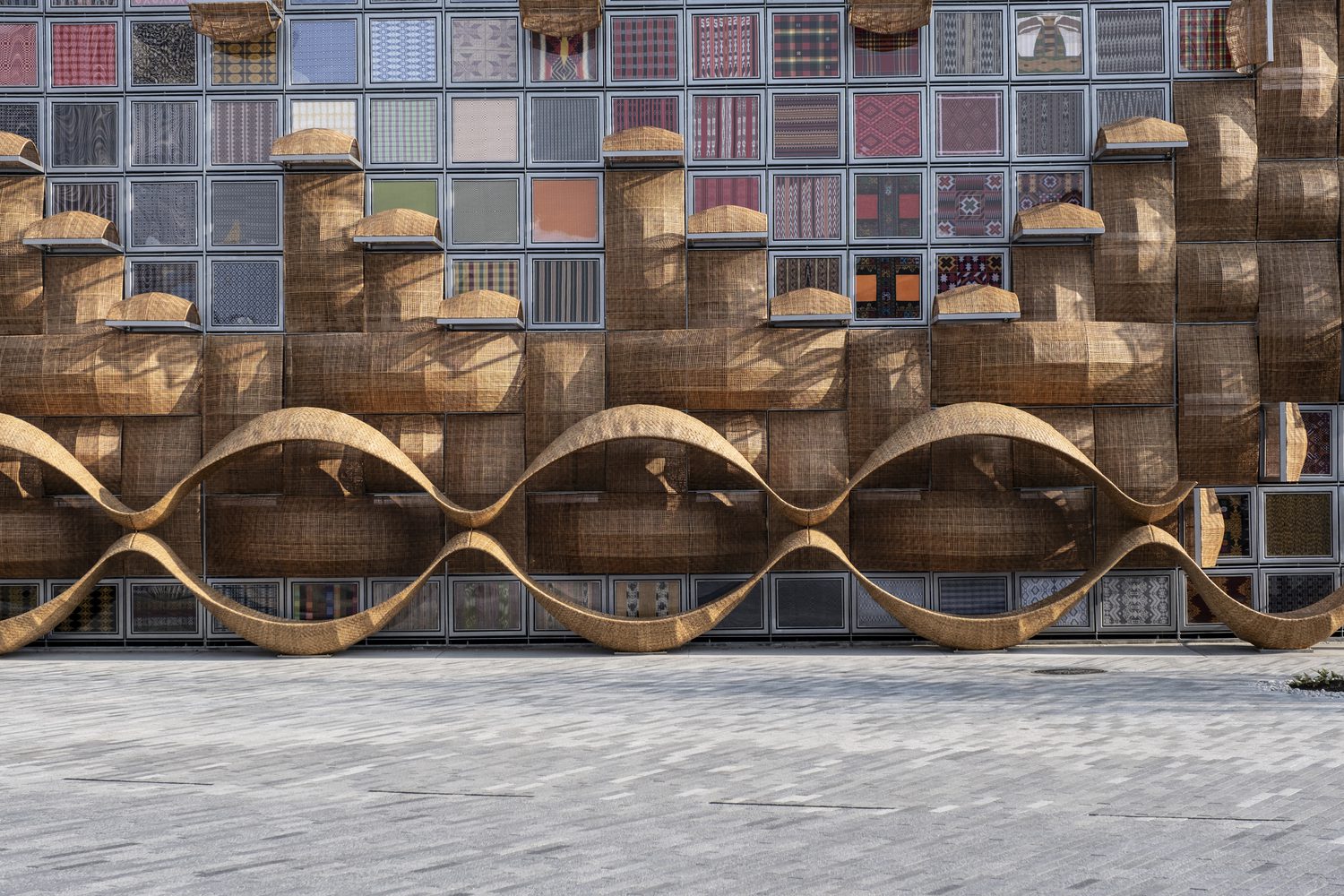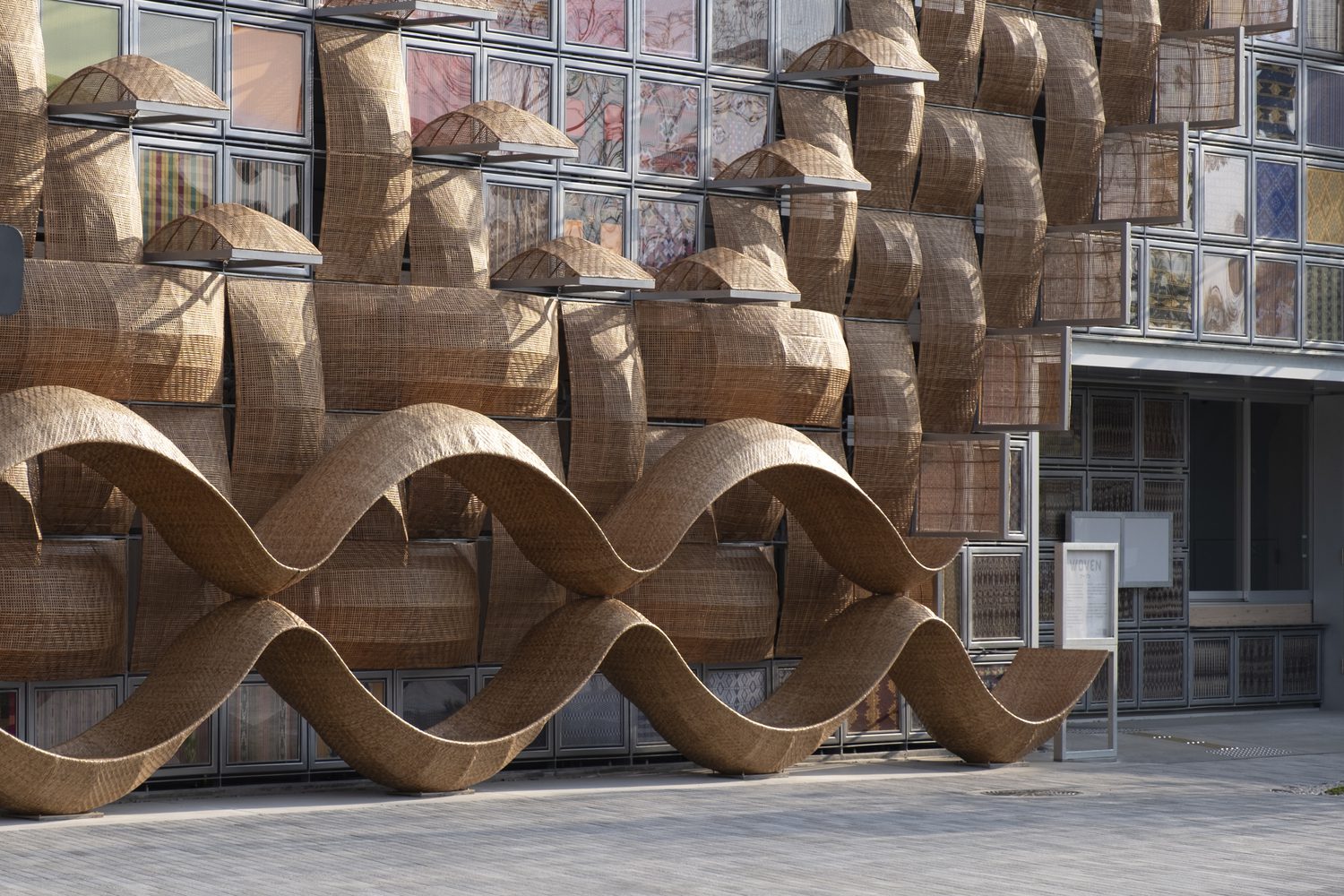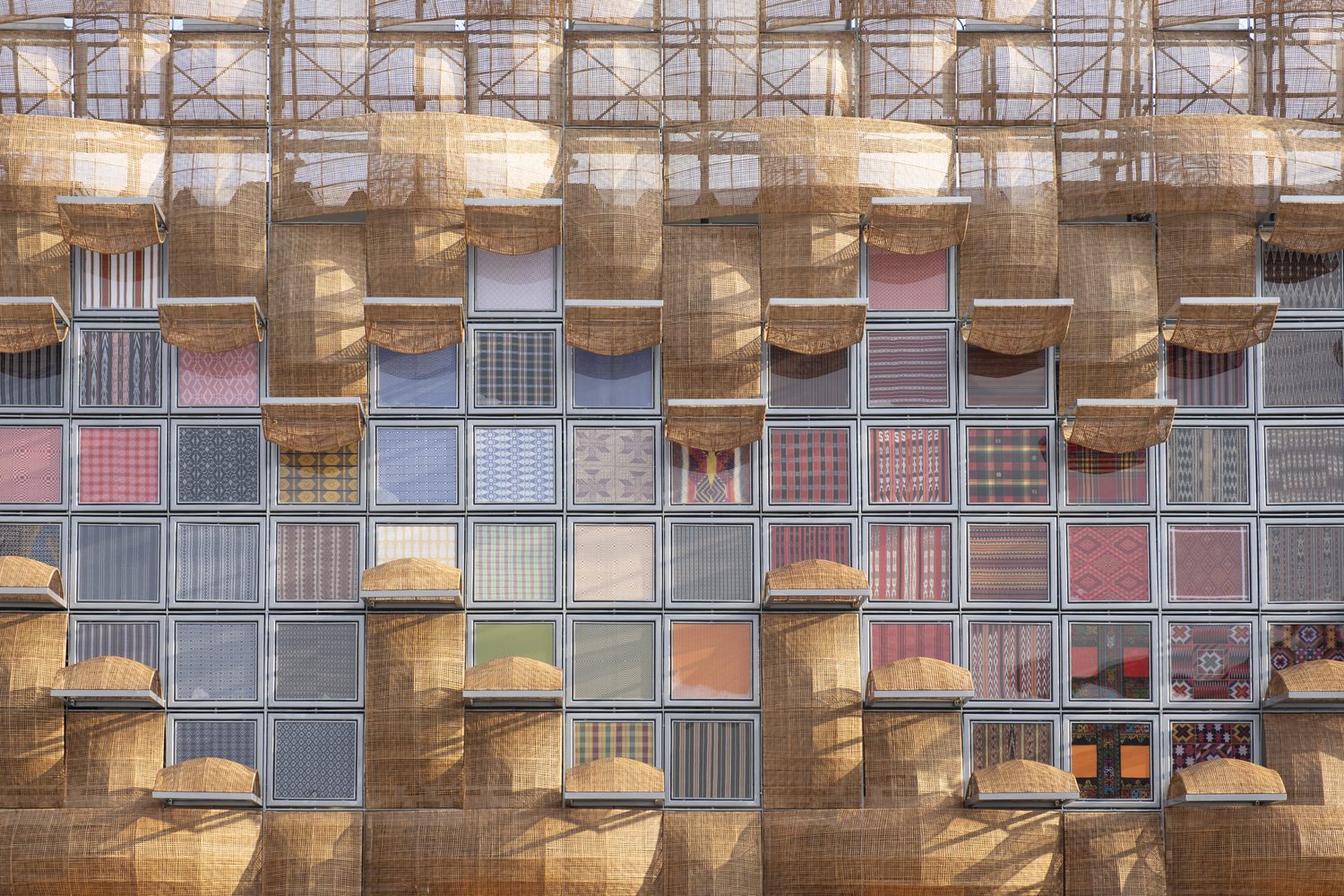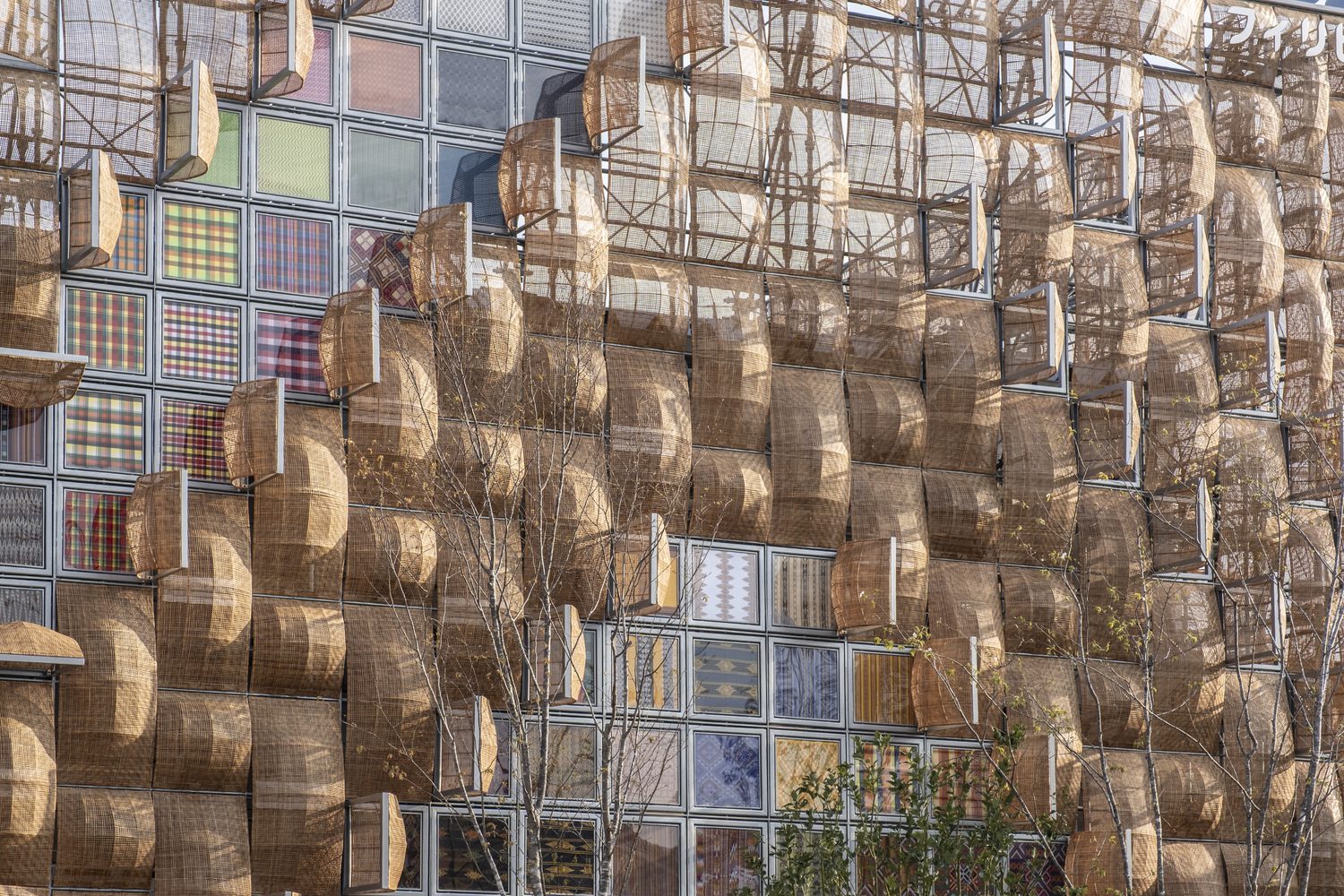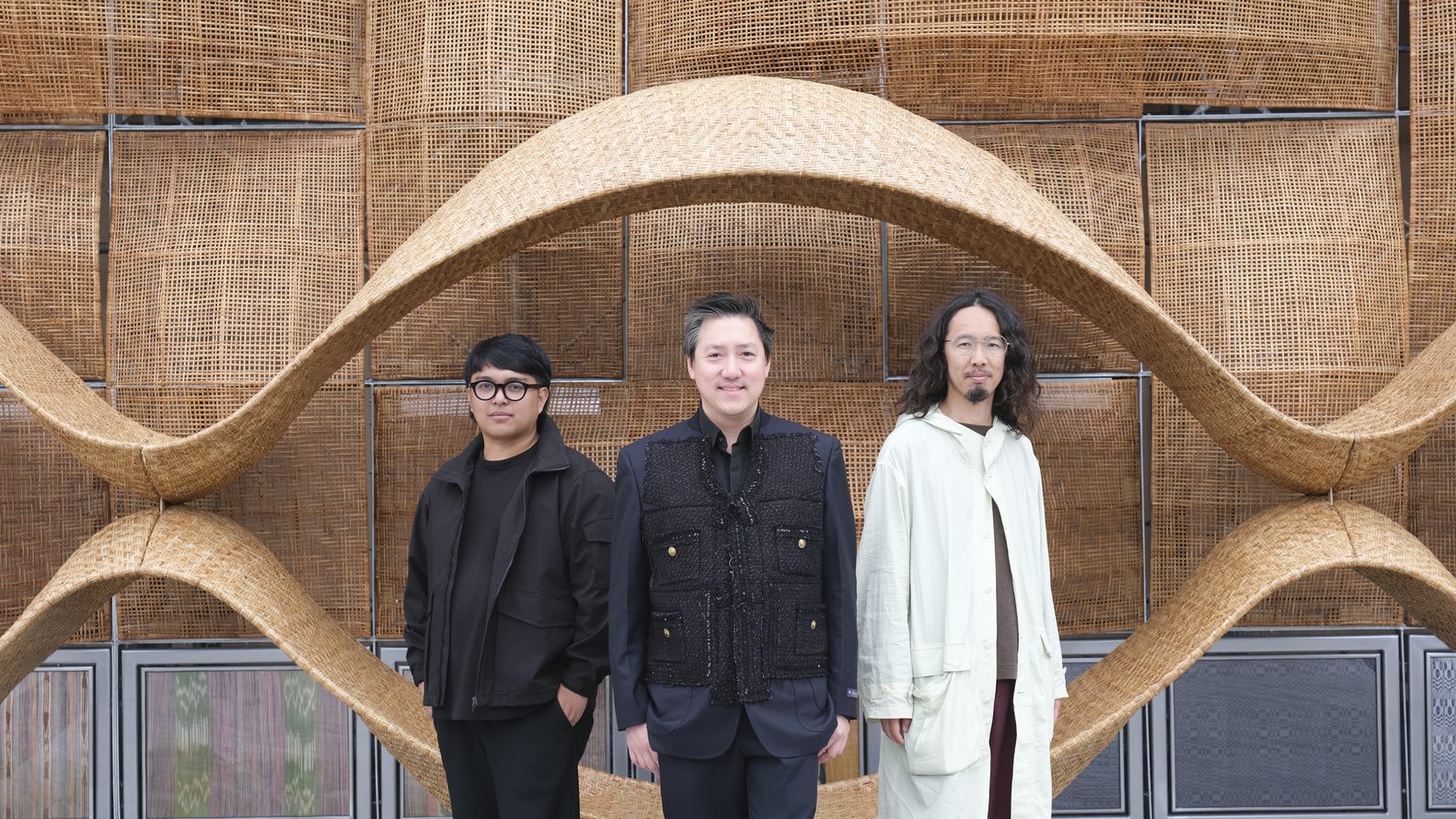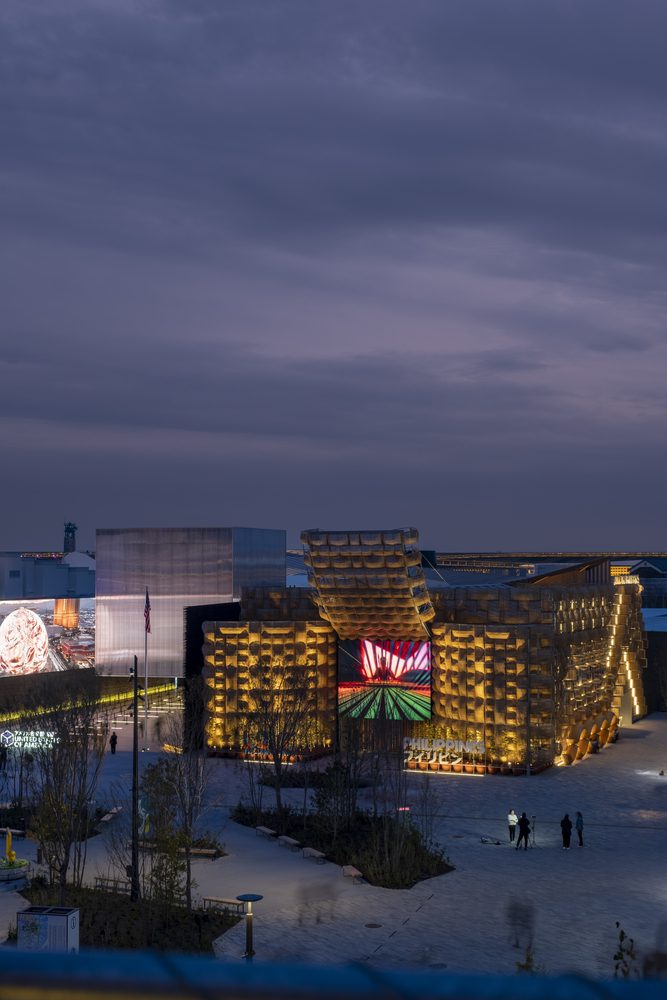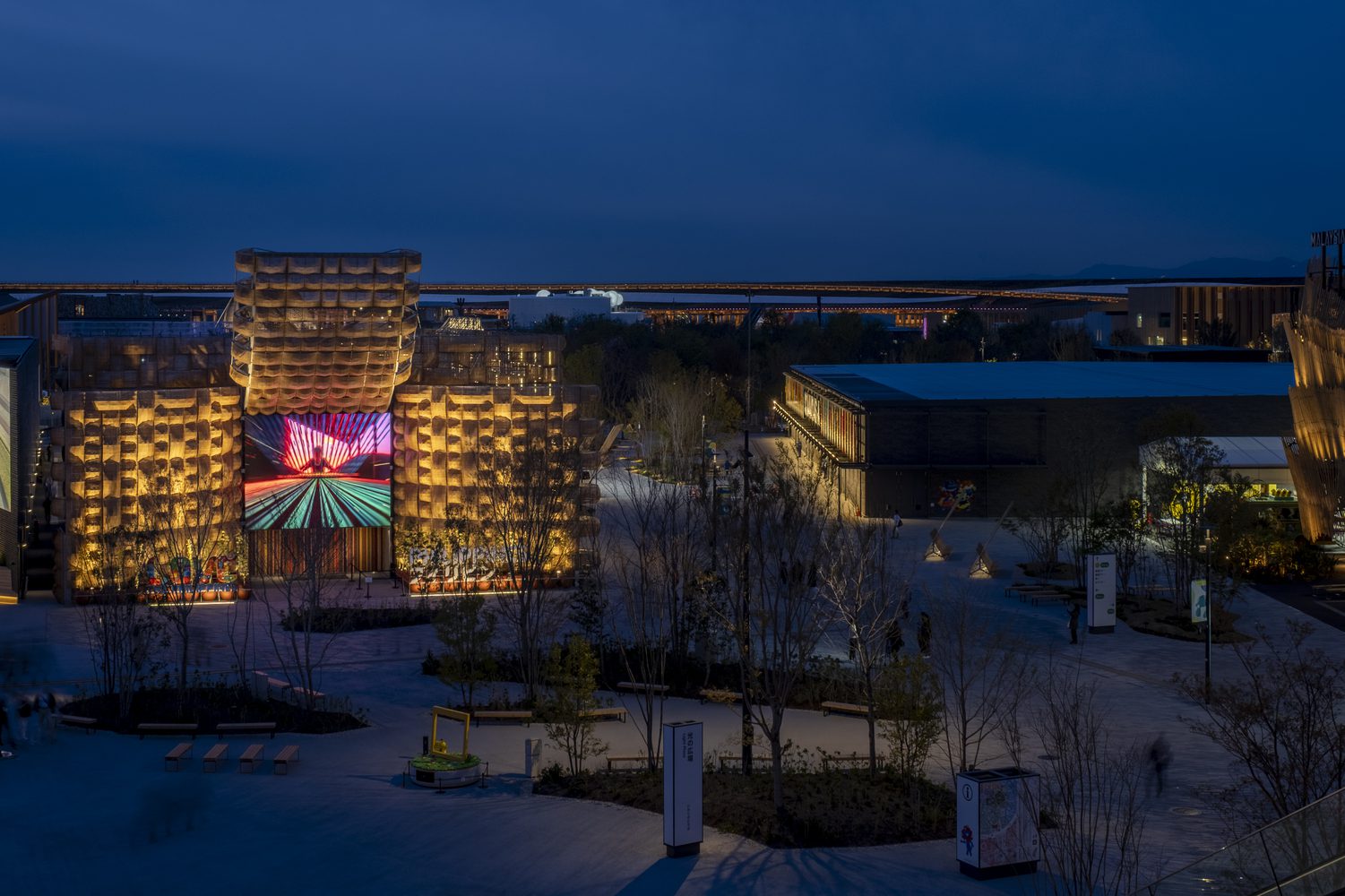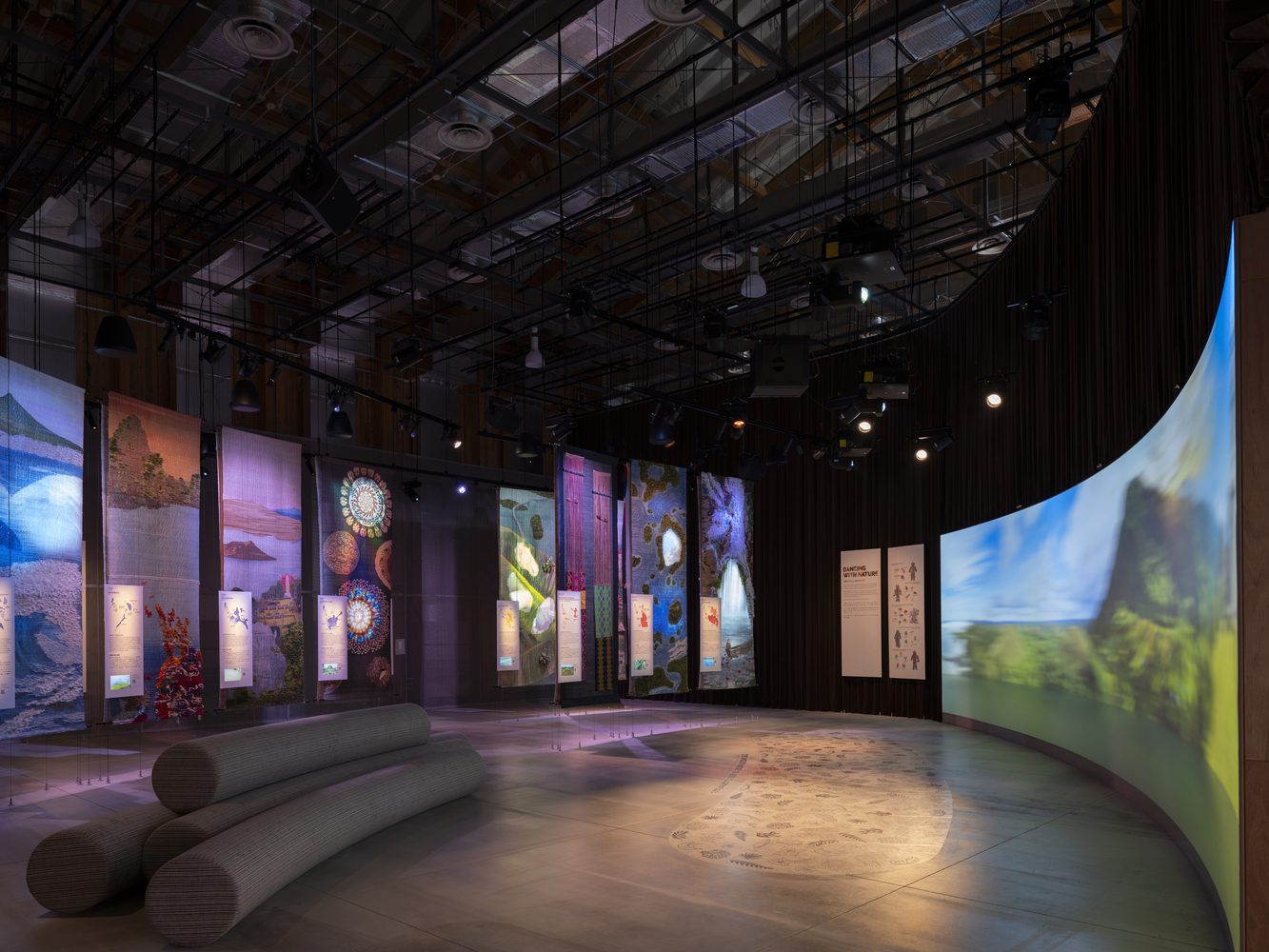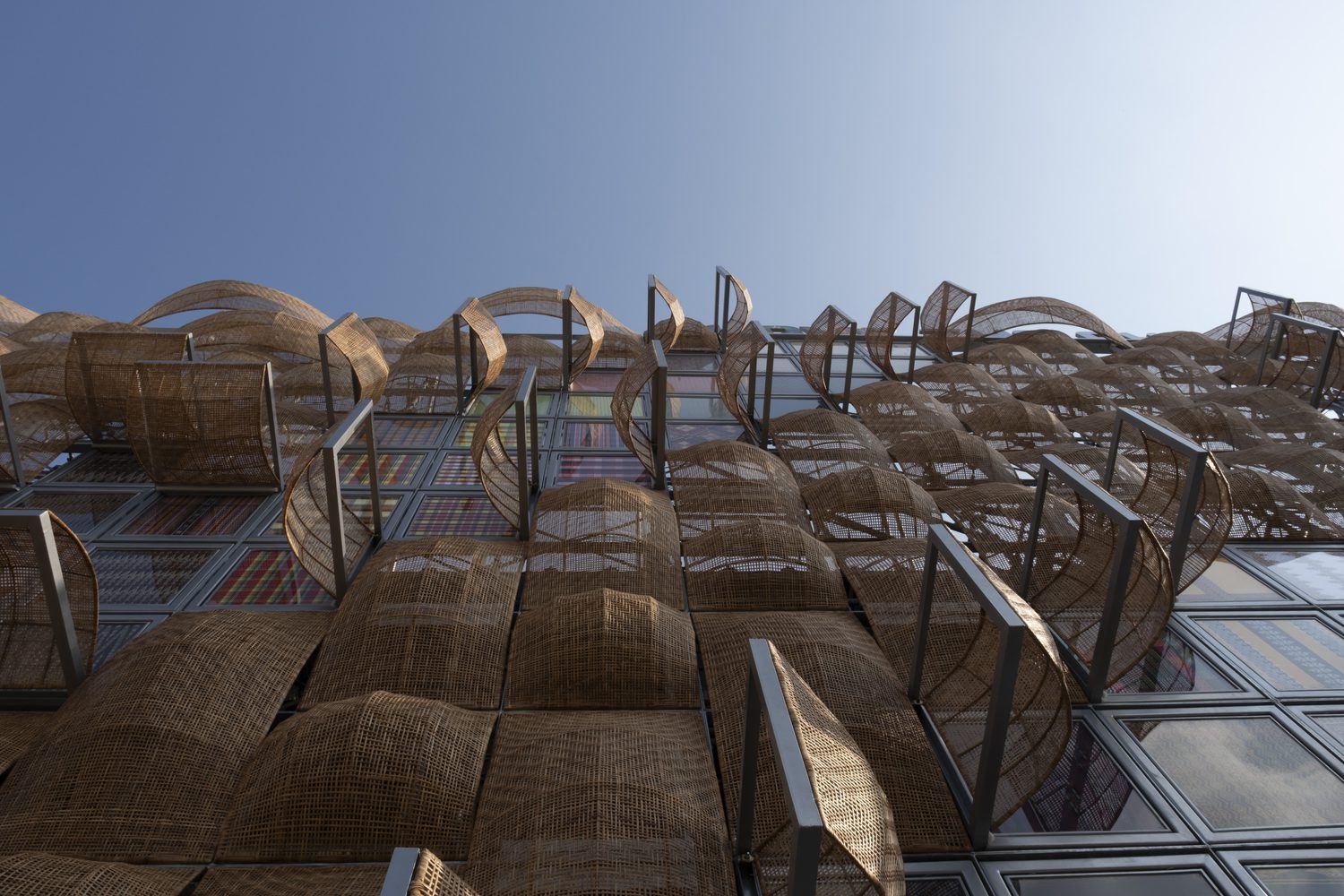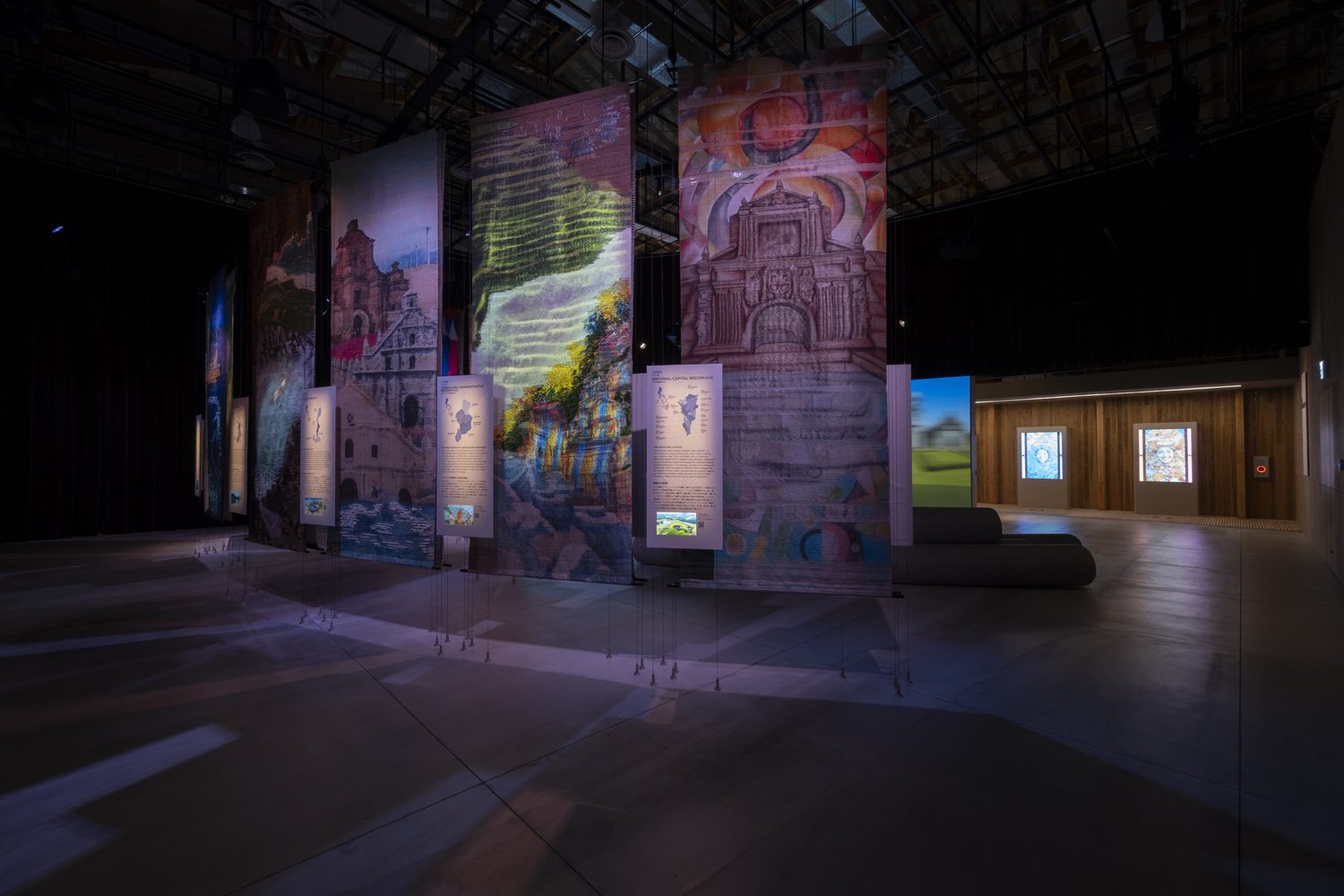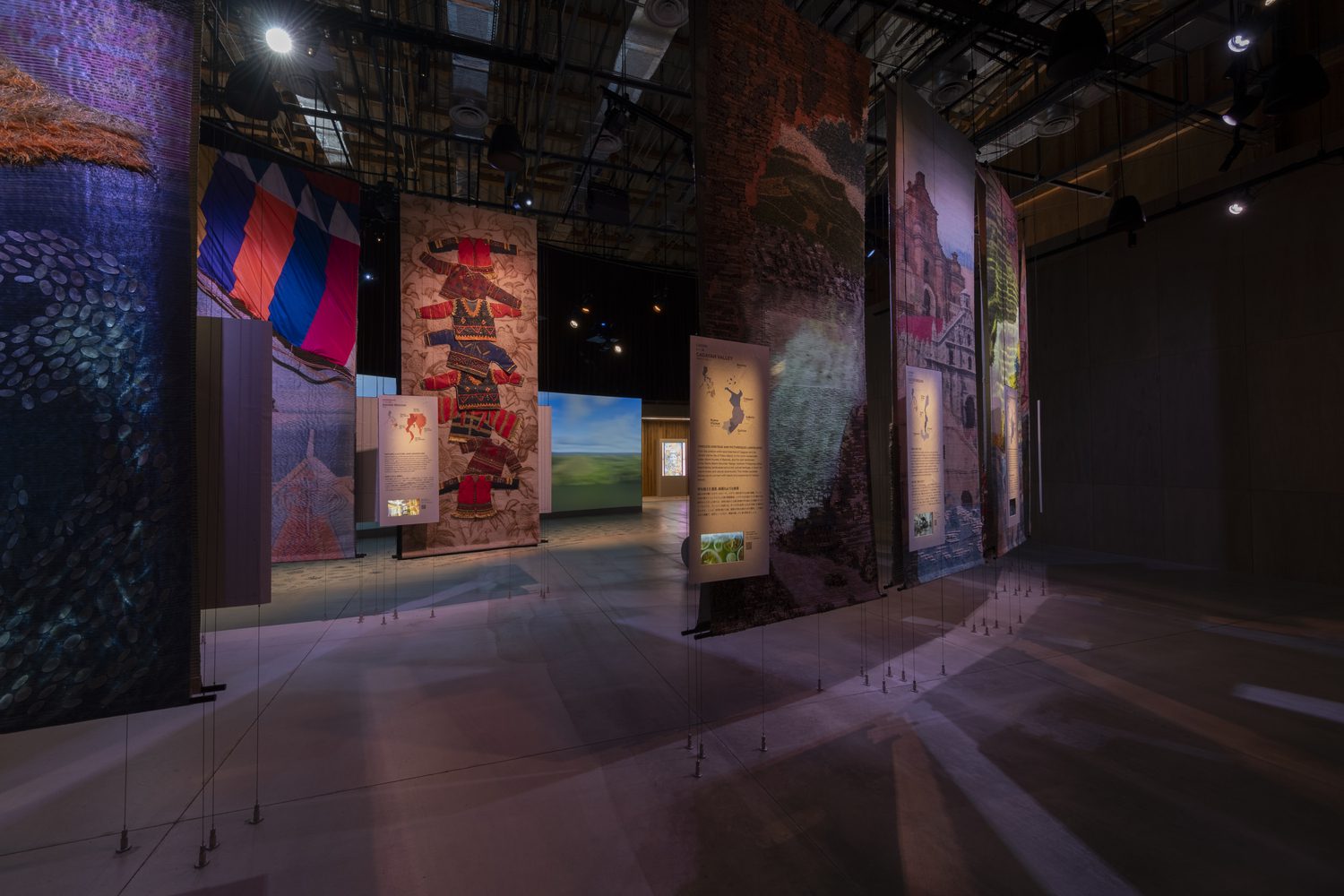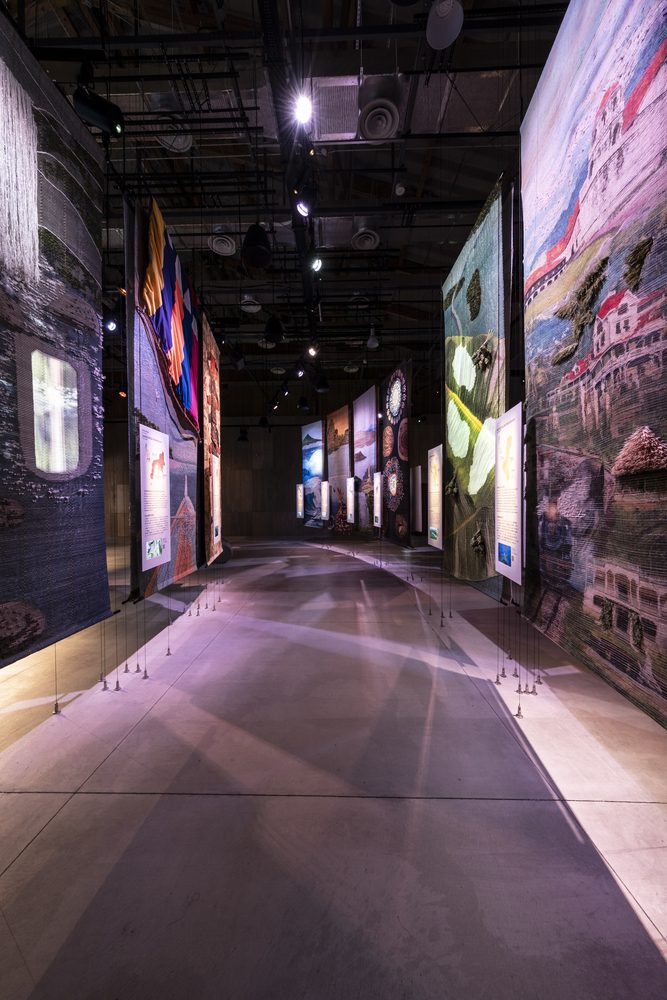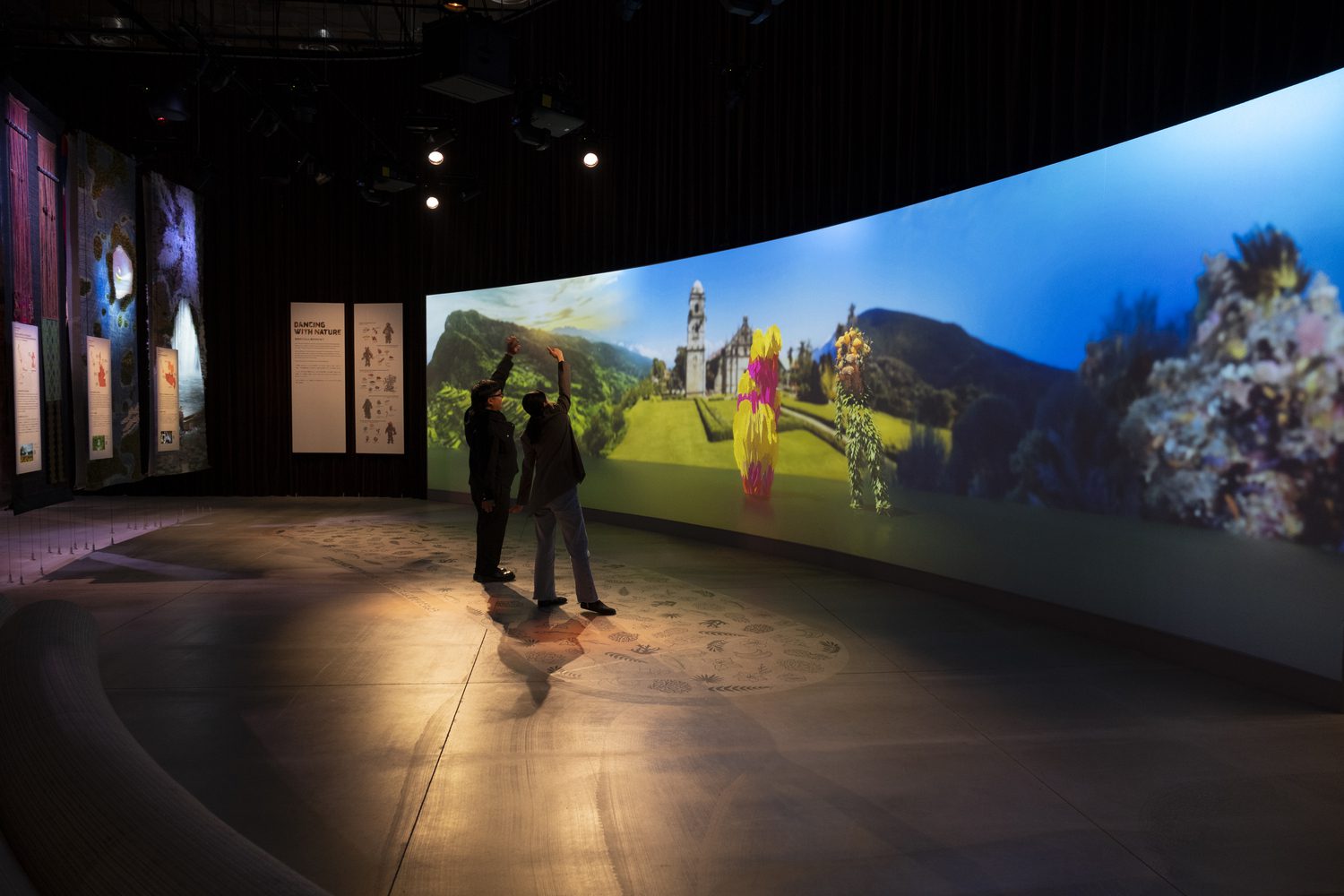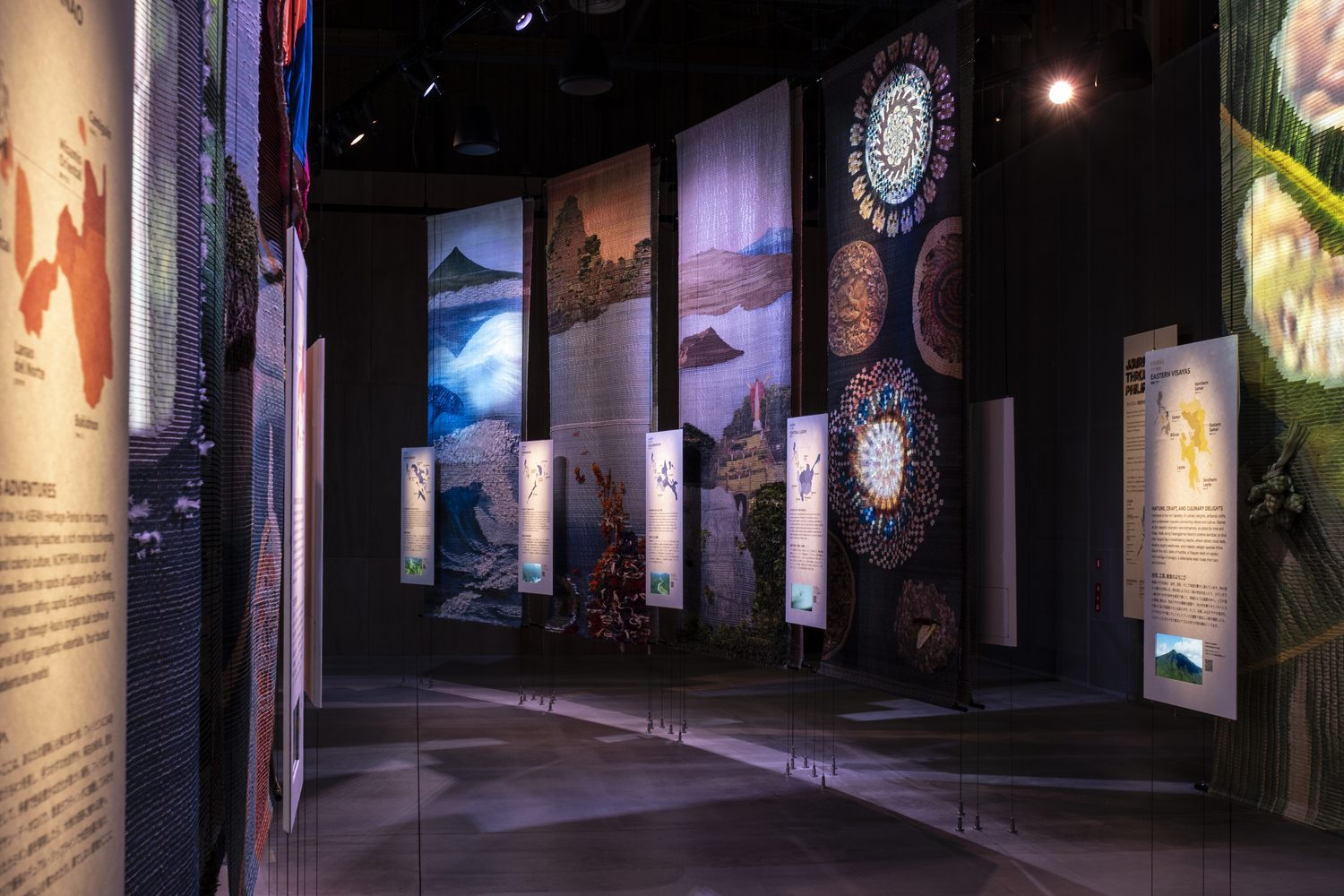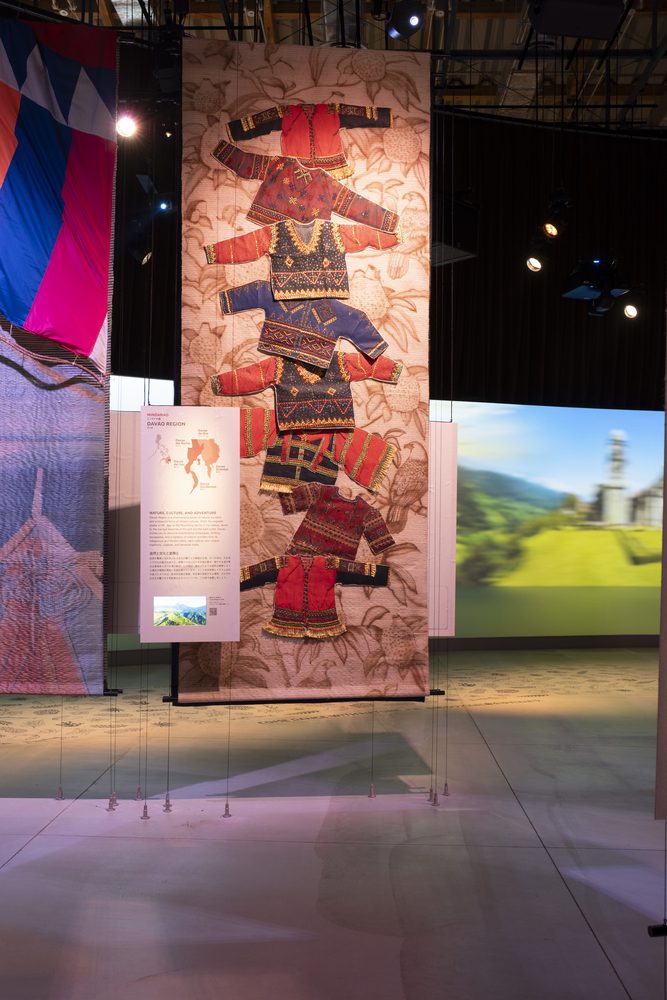Expo 2025 officially welcomed visitors on April 13 in Osaka, Japan, featuring the Philippine Pavilion designed by Carlo Calma Consultancy. Titled “Woven,” the pavilion embodies the nation’s deep-rooted ties to nature, cultural traditions, and community spirit. Centered around the theme “Nature, Culture & Community: Woven Together for a Better Future,” the exhibition showcases the Philippines’ rich creativity, vibrant diversity, and commitment to sustainable progress—while encouraging visitors to connect with the country’s cultural identity and environmental values.
The pavilion’s design is inspired by the Filipino weaving tradition, symbolizing connection and resilience. Its architecture reflects the concept of warp and weft, signifying unity, strength, and progress. Built using over 1,000 rattan threads and 212 handwoven panels, the pavilion transforms traditional weaving into a large-scale architectural form, representing continuous growth through the extension of threads. These panels, crafted by artisans from various communities across the Philippines, honor the country’s rich weaving heritage and highlight the diversity of its 18 ethnolinguistic regions. By adapting traditional weaving methods into an architectural framework, the pavilion emphasizes the contemporary significance of Filipino craftsmanship.
The pavilion delves into the theme “Nature, Culture & Community” through its design and exhibits, aiming to showcase the Philippines’ rich biodiversity by integrating natural materials and interactive displays that promote environmental consciousness. Nature is represented by focusing on the country’s mega biodiversity, encouraging visitors to explore its diverse landscapes and understand the importance of conservation for future generations. Culture highlights Filipino creativity and innovation, particularly using natural and recycled materials to create sustainable products through emerging technologies. Community underscores the power of unity and diversity, offering visitors a taste of the Filipino Fiesta spirit through exhibits and live performances that celebrate shared experiences and collective joy.
The pavilion’s design also highlights collaboration, featuring contributions from numerous weaving communities in what is considered the largest collective effort of Filipino weavers for a single project. Artisans from 18 regions came together to create detailed handwoven textiles and rattan panels that represent local traditions, while incorporating sustainable materials such as abaca, pineapple fiber, silk, and bamboo.
The design also emphasizes sustainability by utilizing renewable and reusable materials to reduce waste and minimize environmental impact. Circularity principles are incorporated into the pavilion’s construction, ensuring materials can be reduced, repaired, refurbished, and recycled. Indigenous renewable materials like rattan and textiles play a key role in the design, honoring Filipino craftsmanship while encouraging eco-friendly practices. After the Expo, modular elements of the pavilion will be relocated to the National Museum of the Philippines, extending its cultural and educational significance. This strategy aligns with the Philippines’ broader commitment to addressing global sustainability challenges and advocating for environmentally responsible practices.
Project info:
- Lead Architectural Firm: Carlo Calma Consultancy
- Executive Architect & Project Management: Cat Inc.
- Guest Experience Design: Tellart
- Year: 2025
- Creative Production: 1053.co | Chochay Garcia
